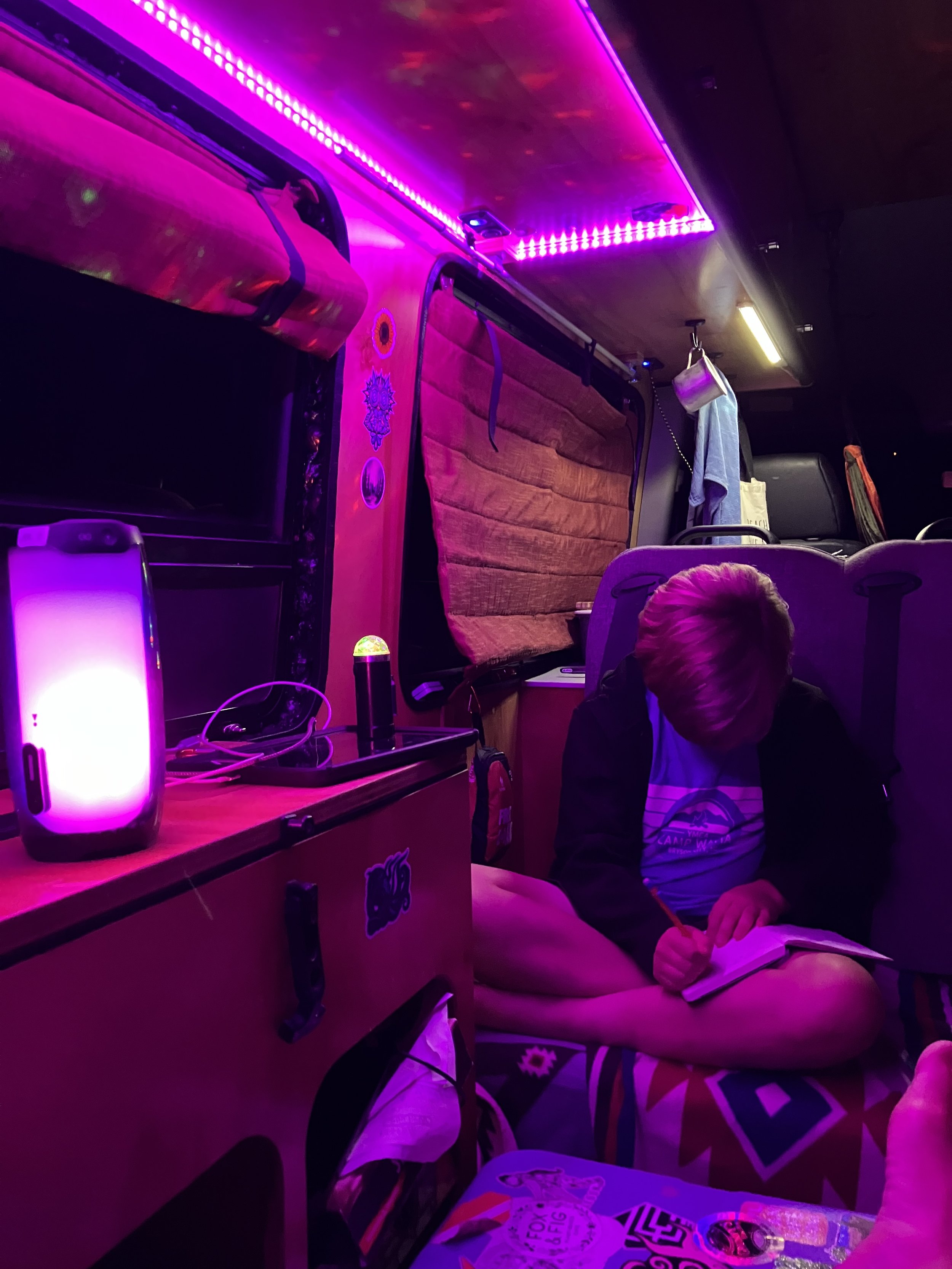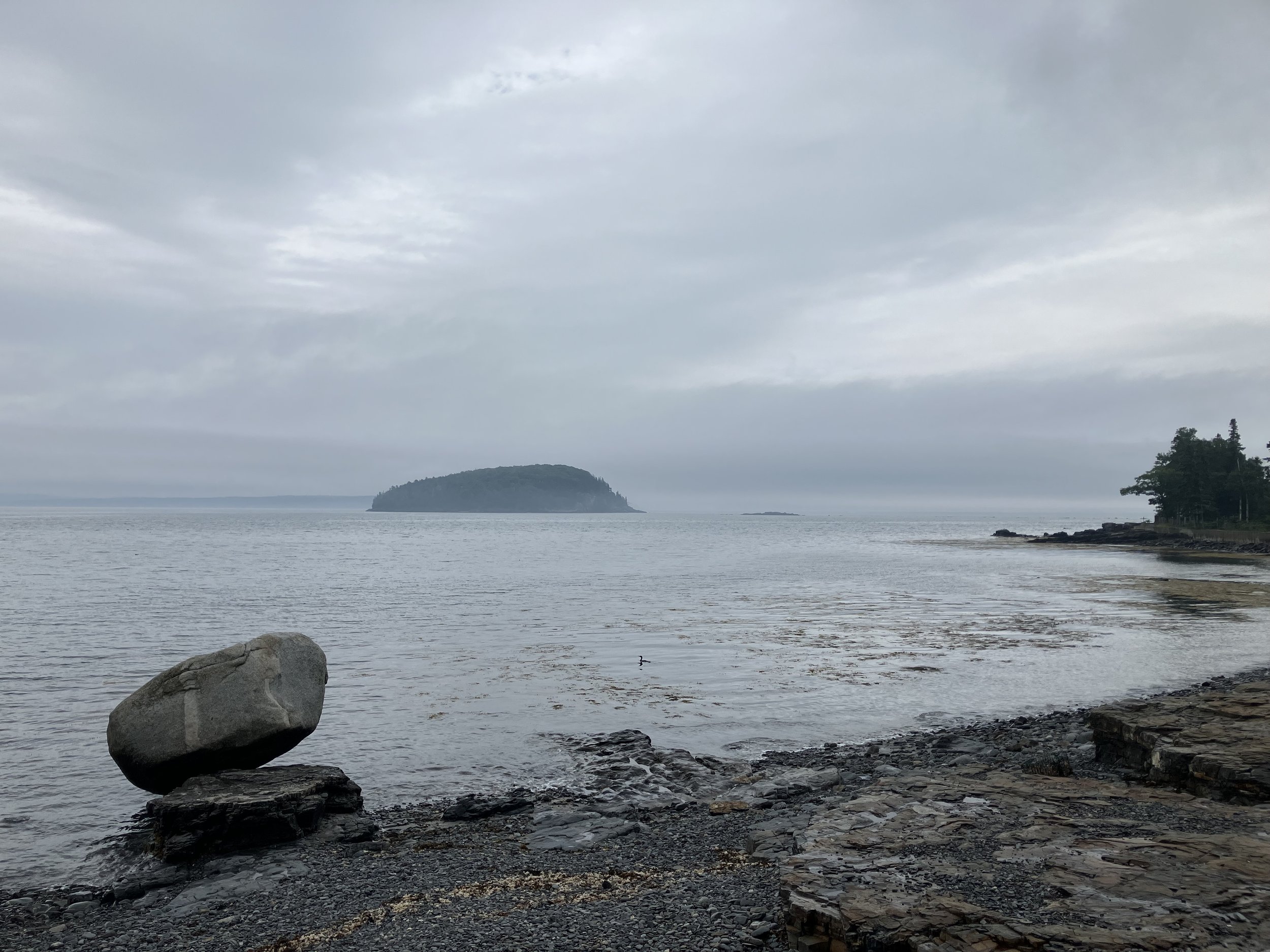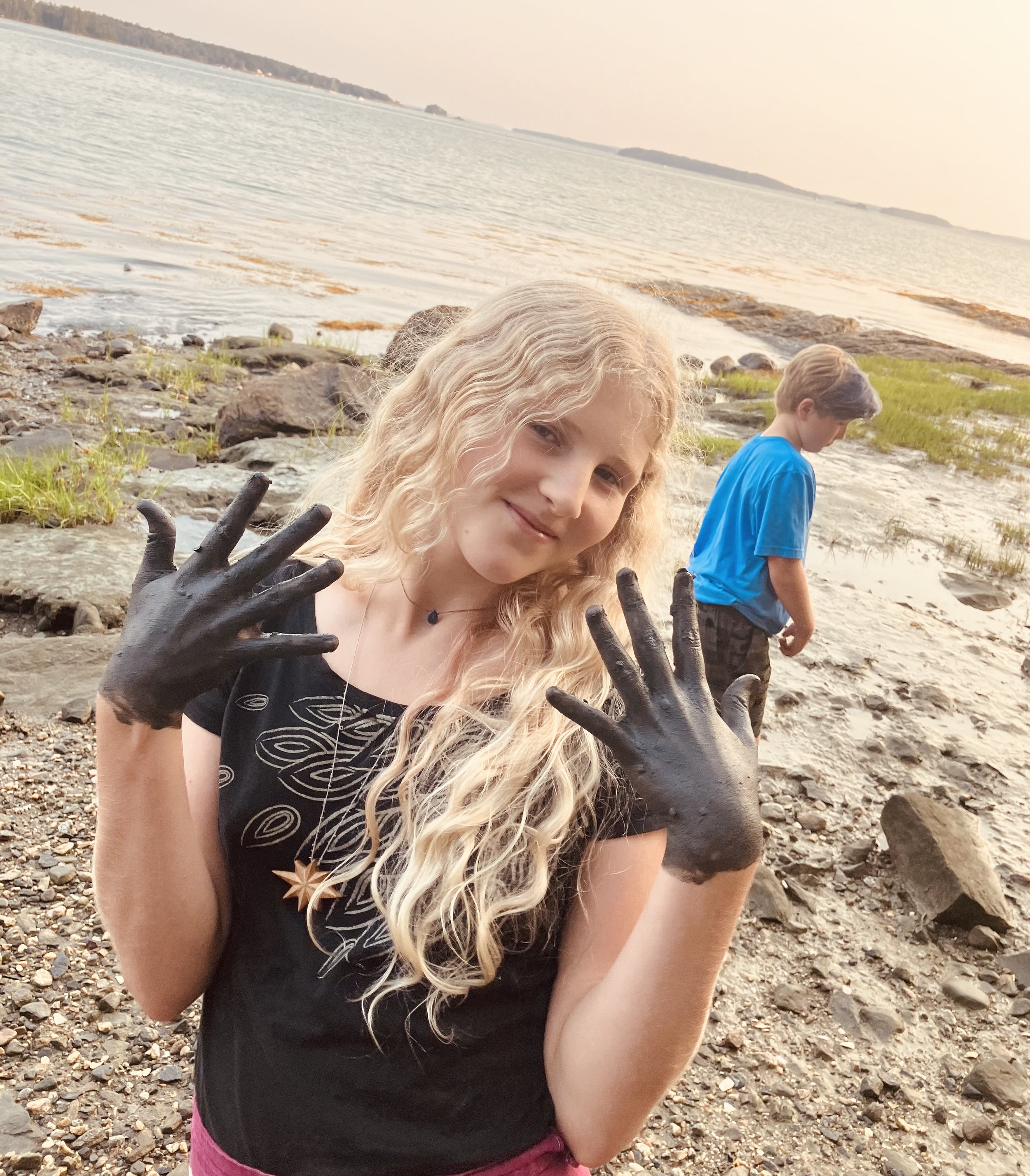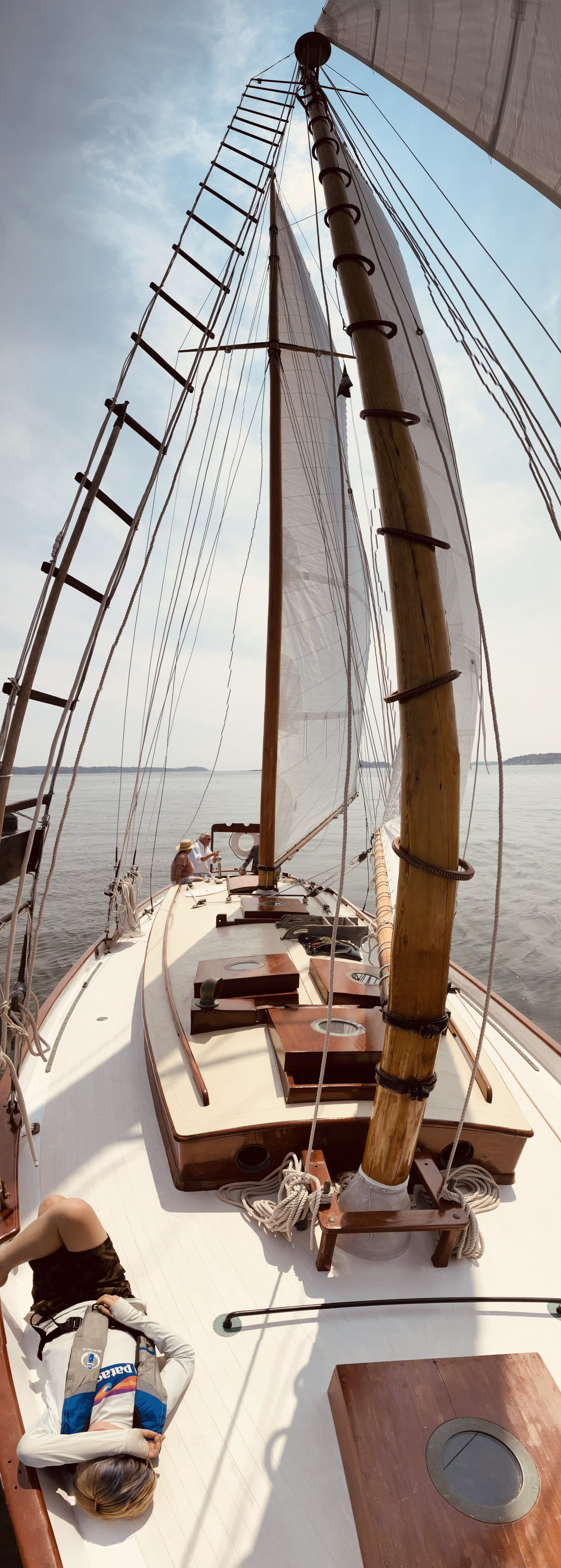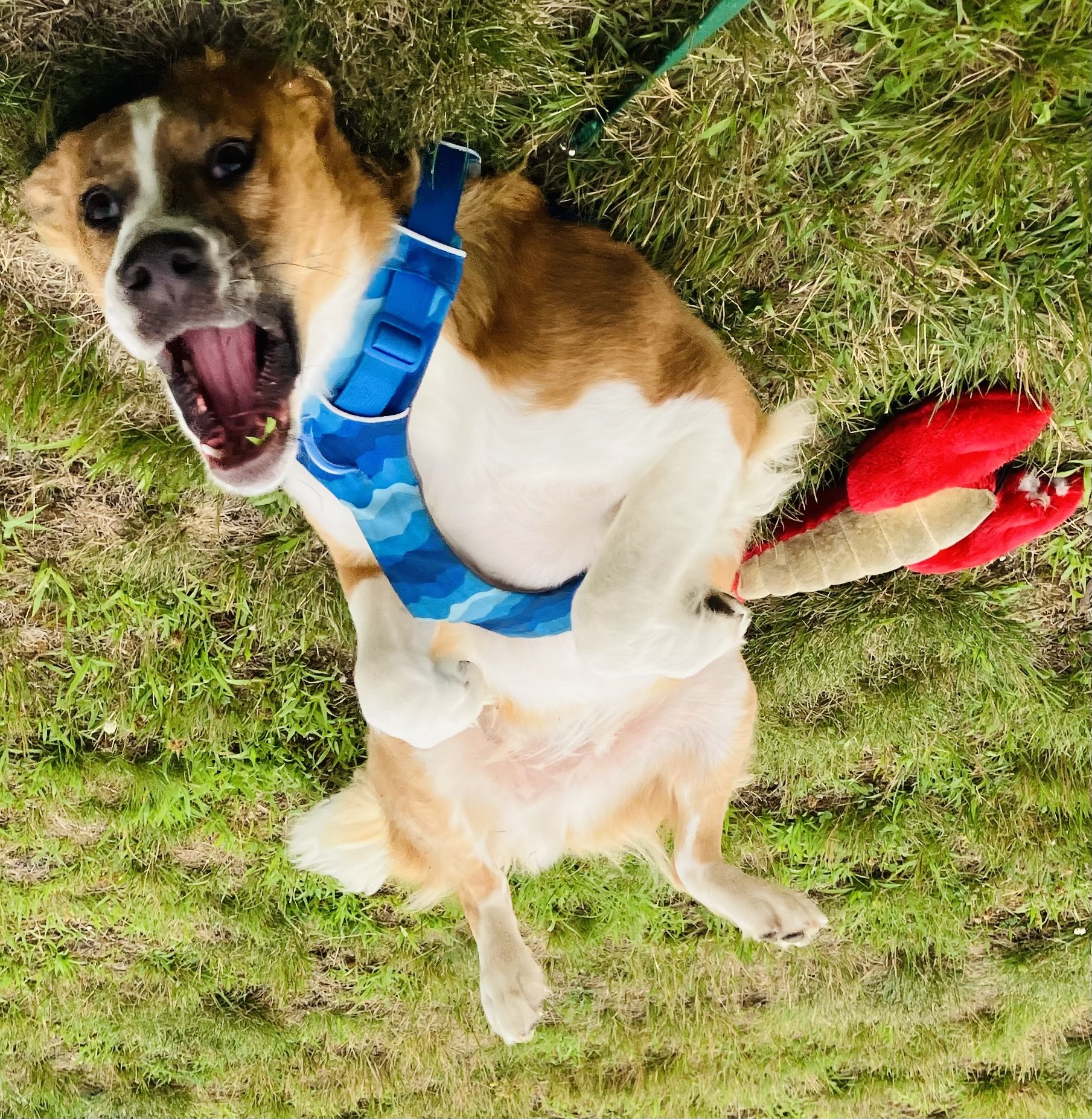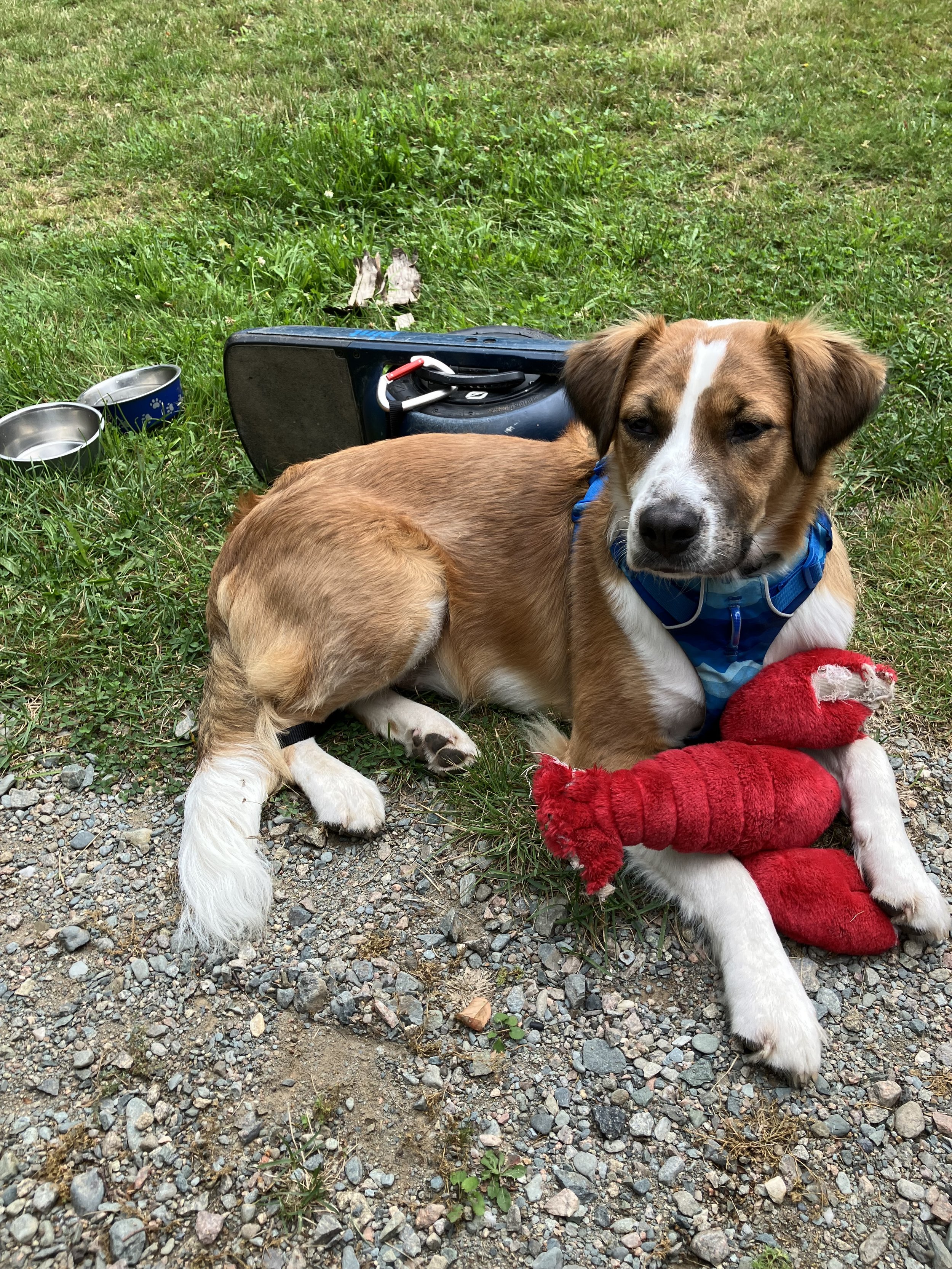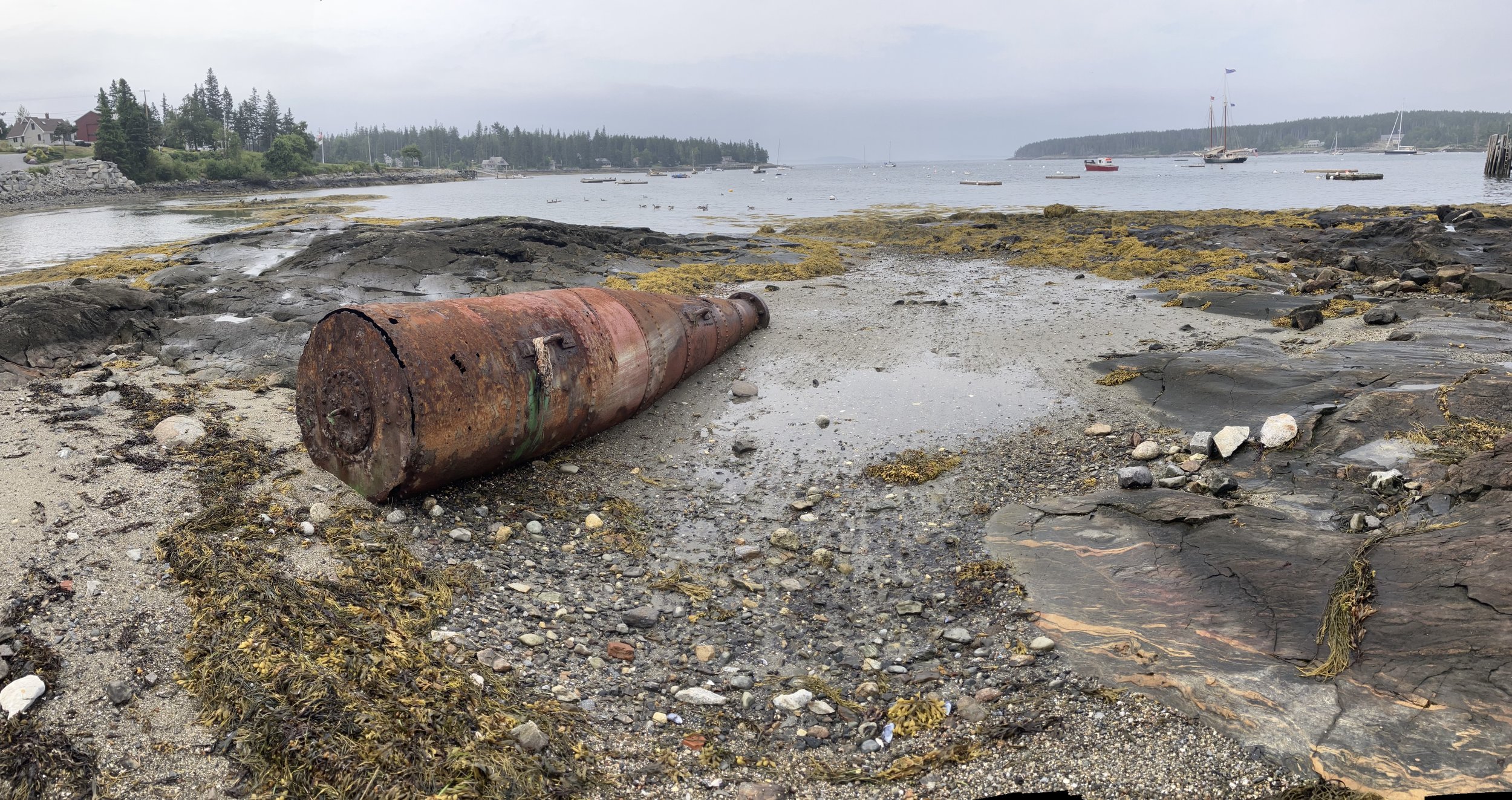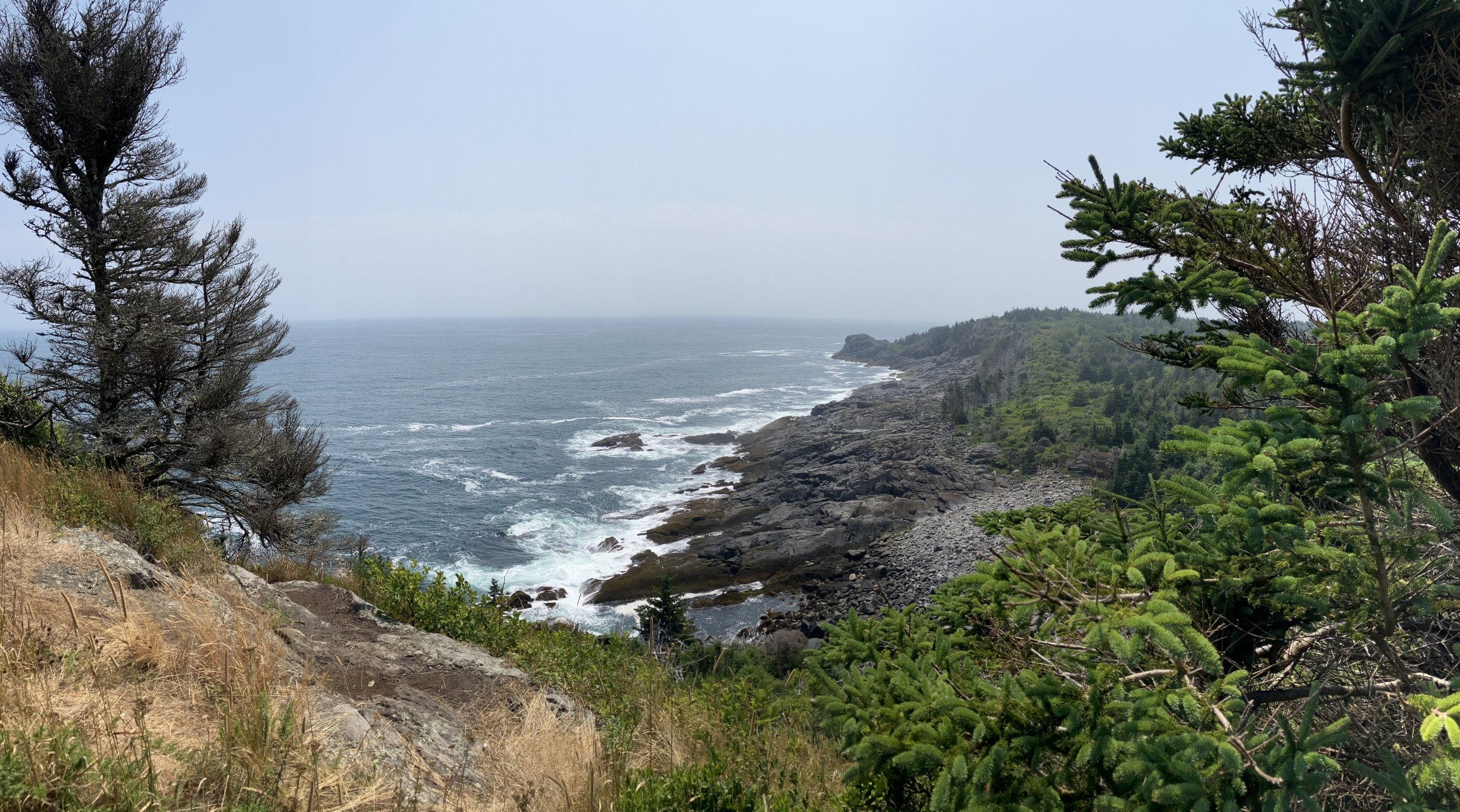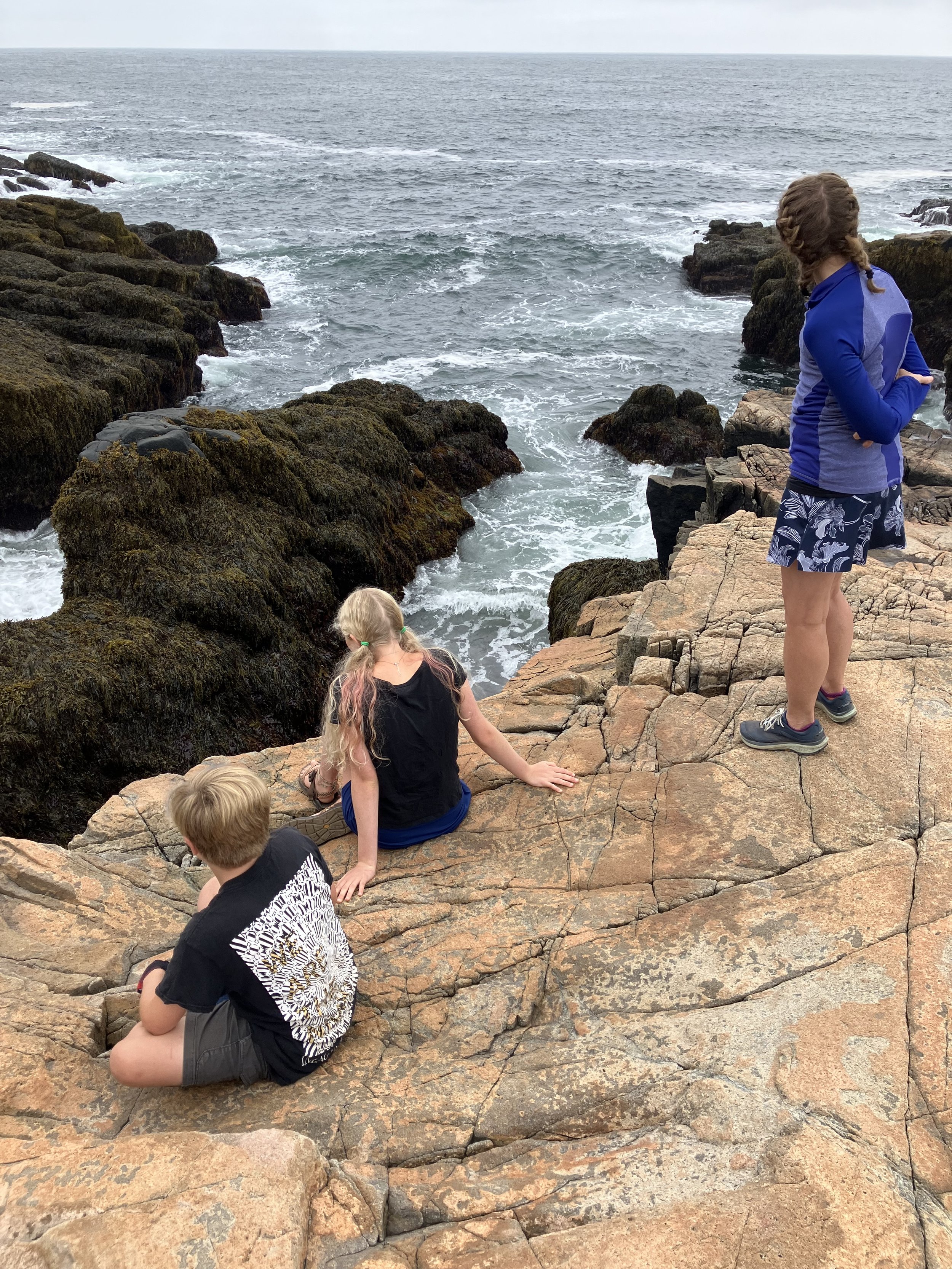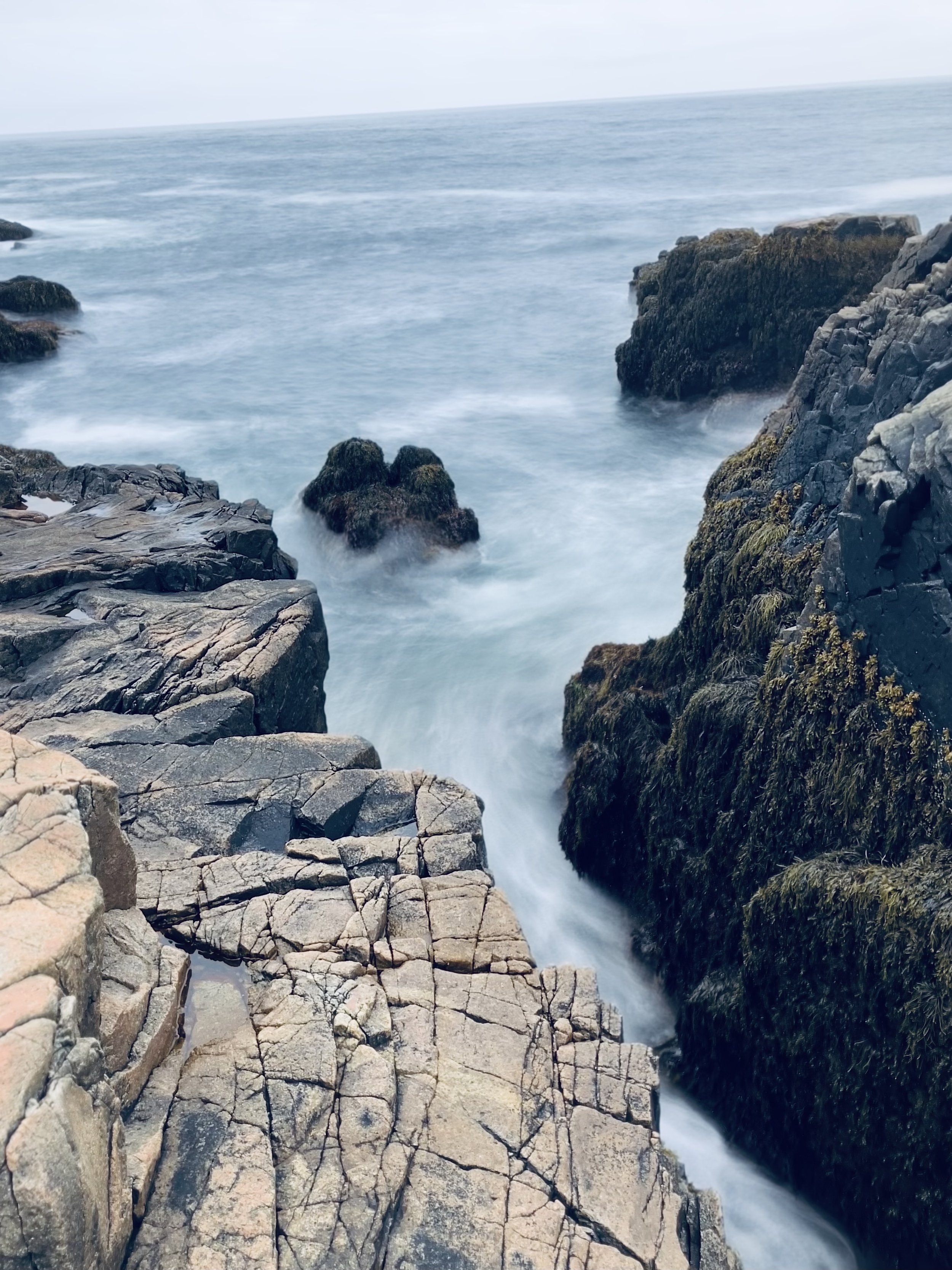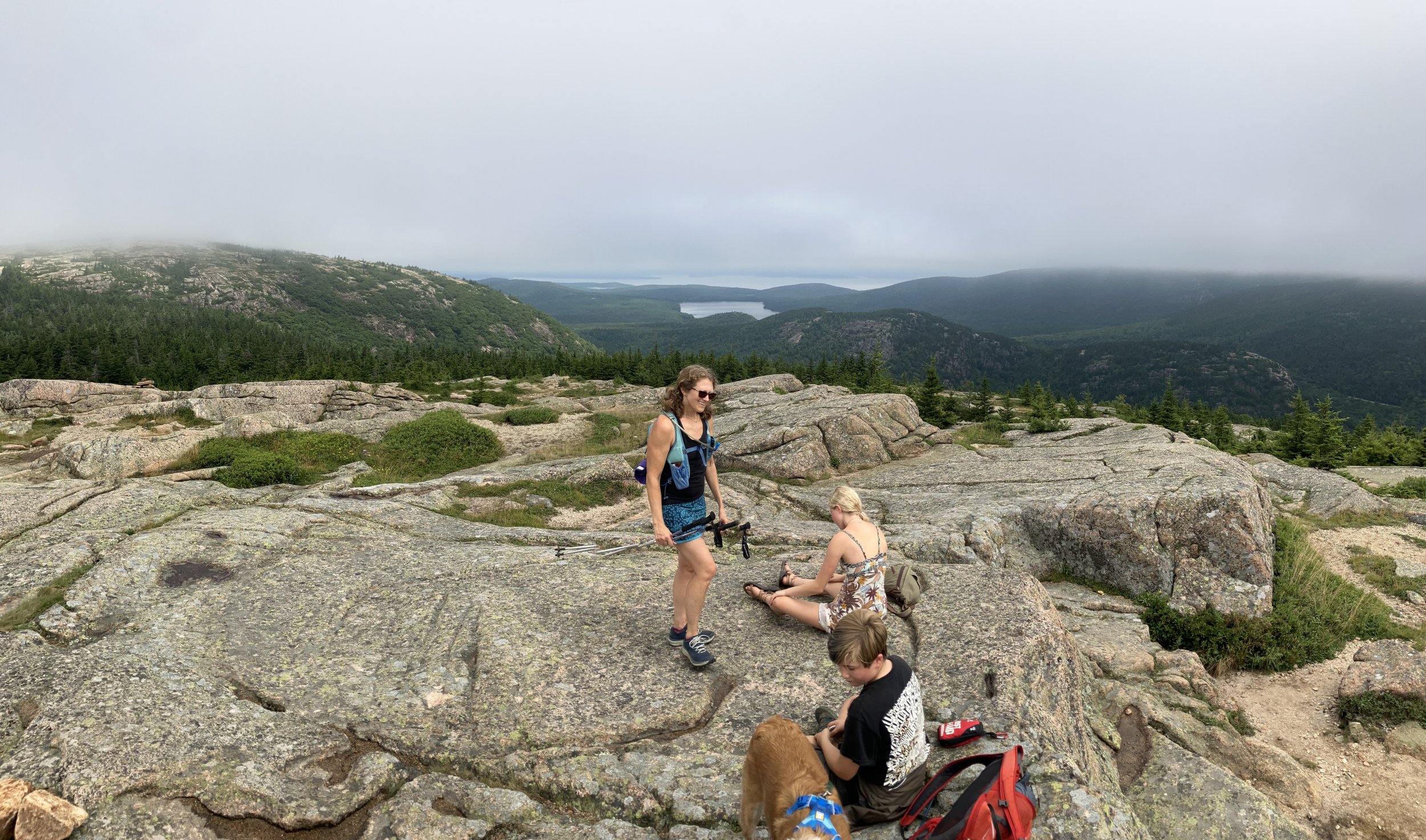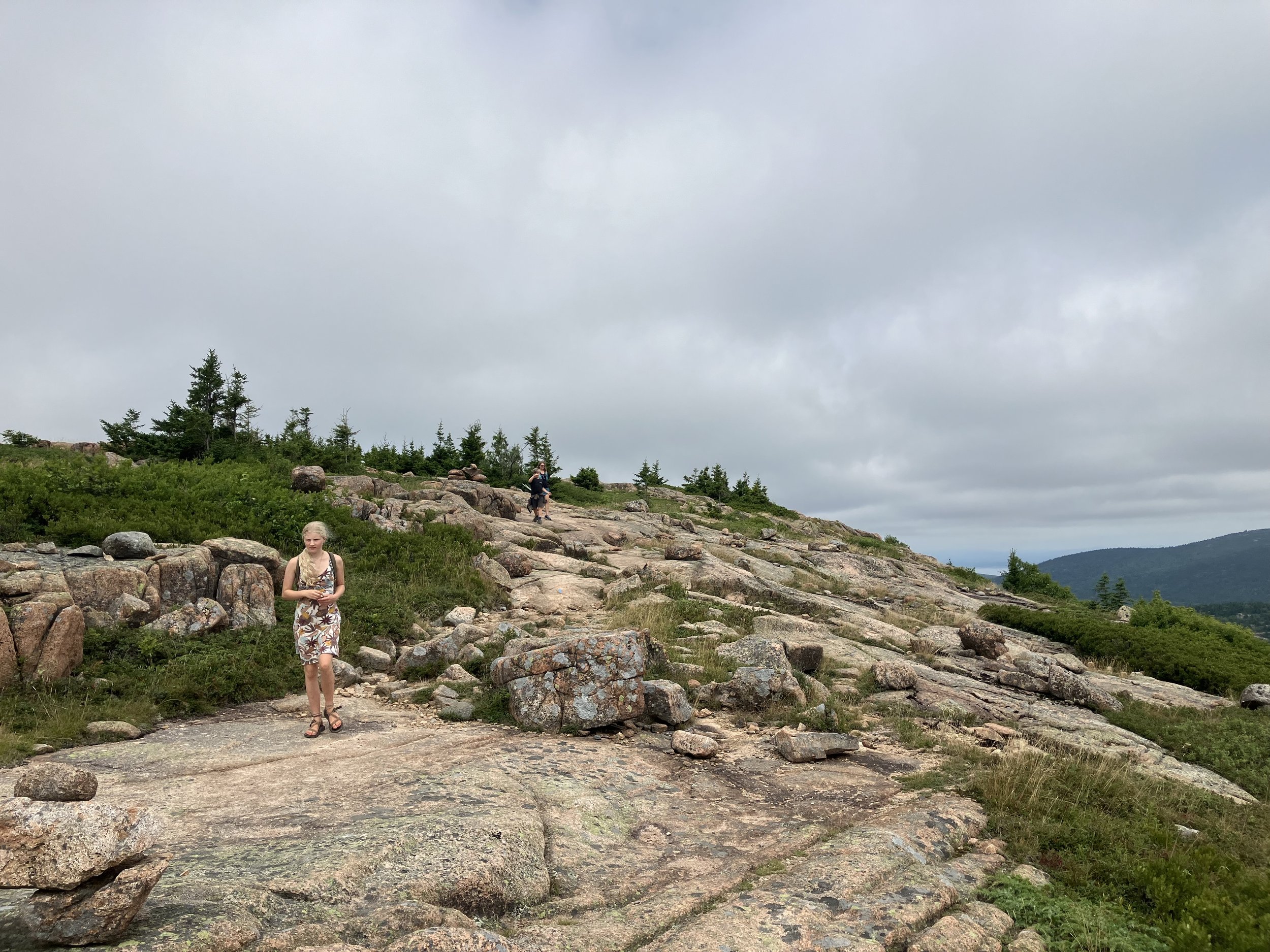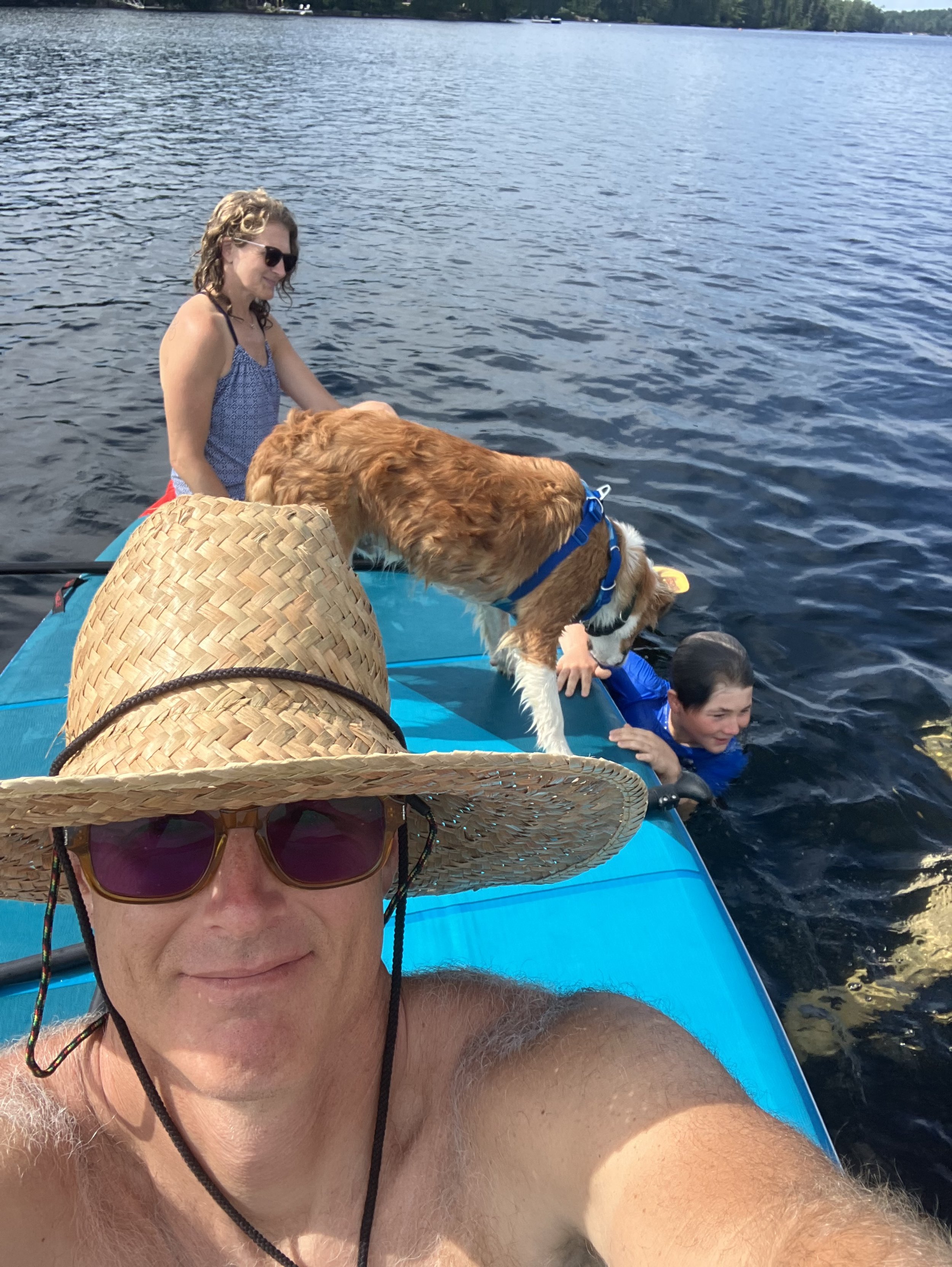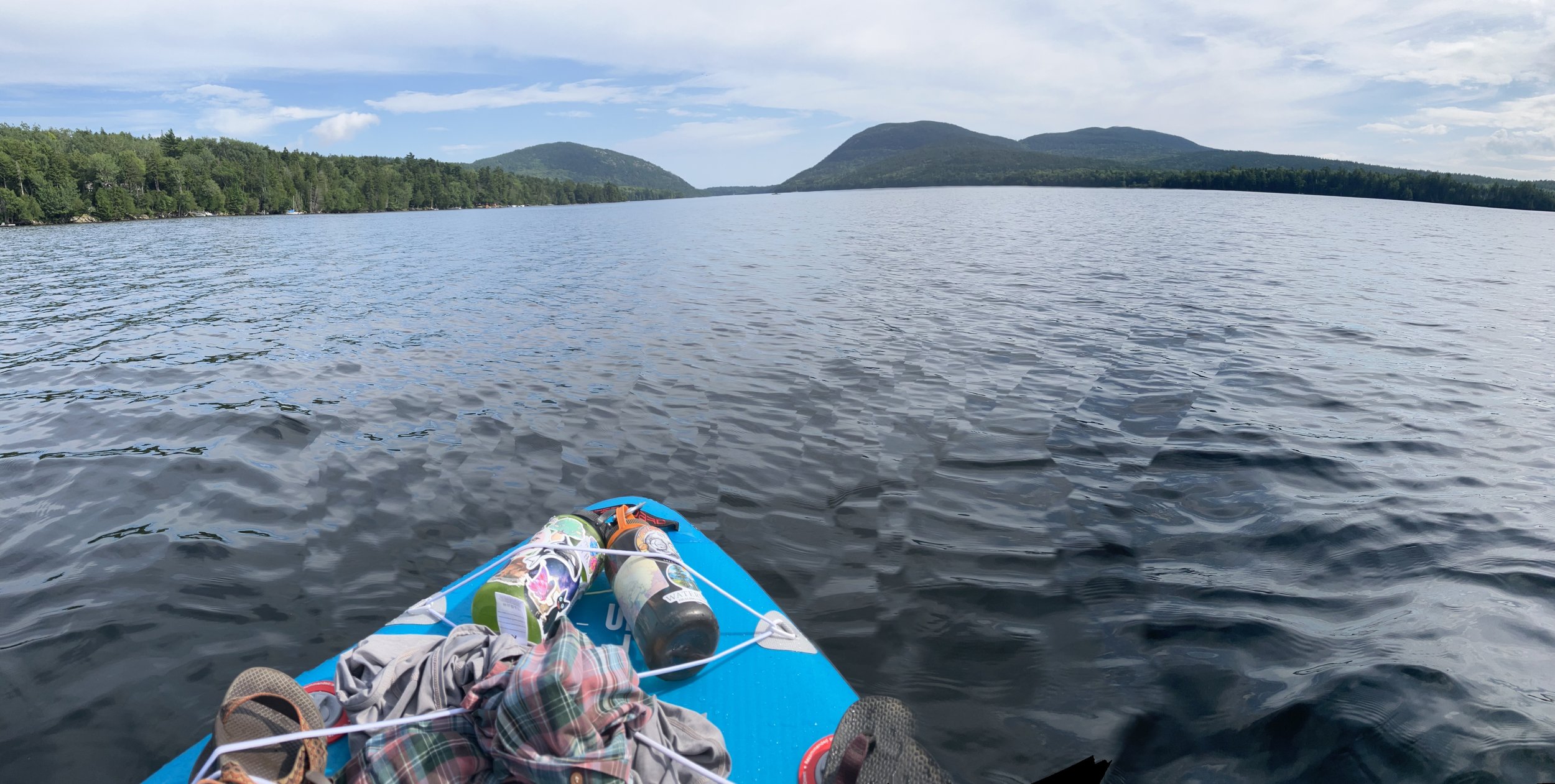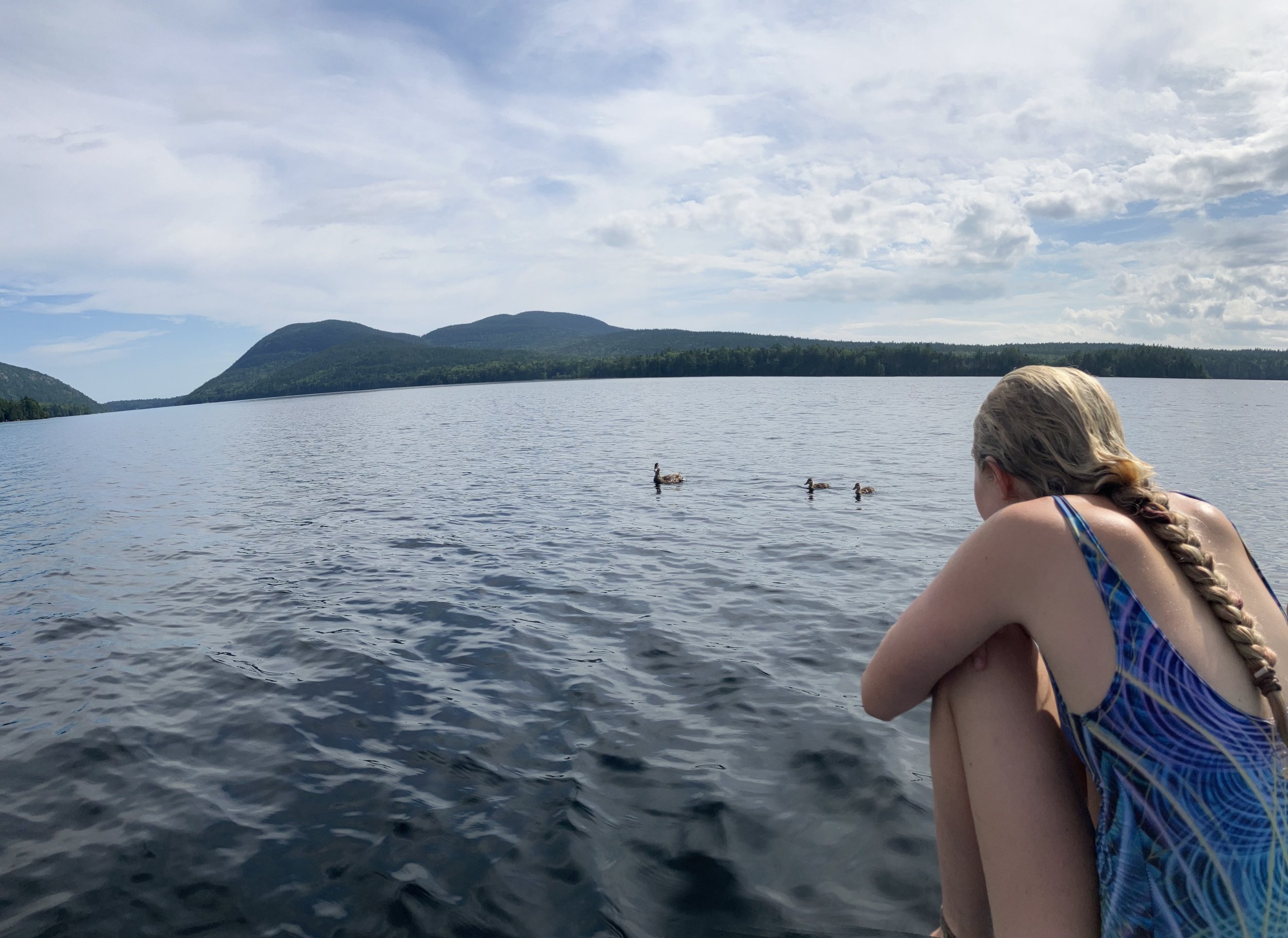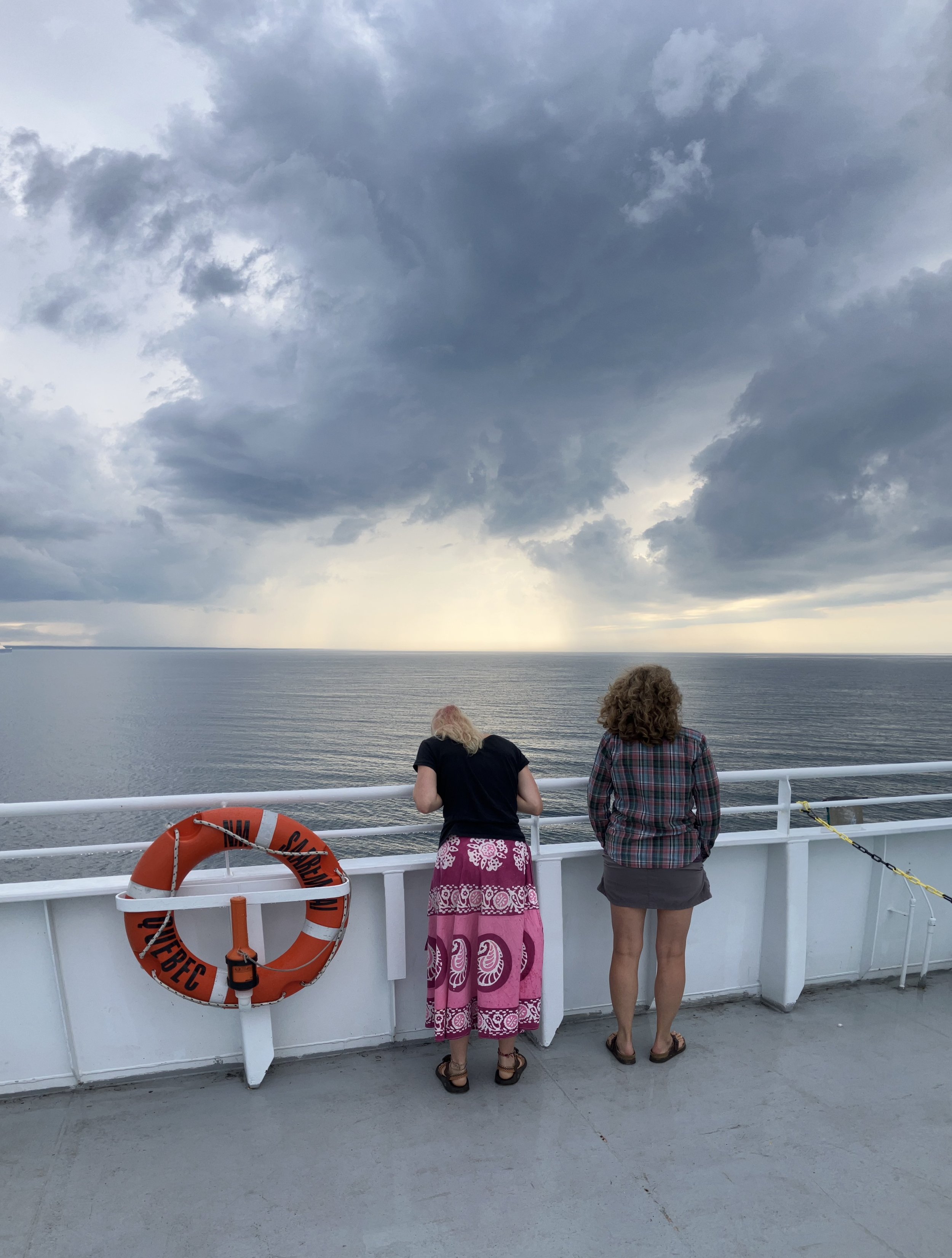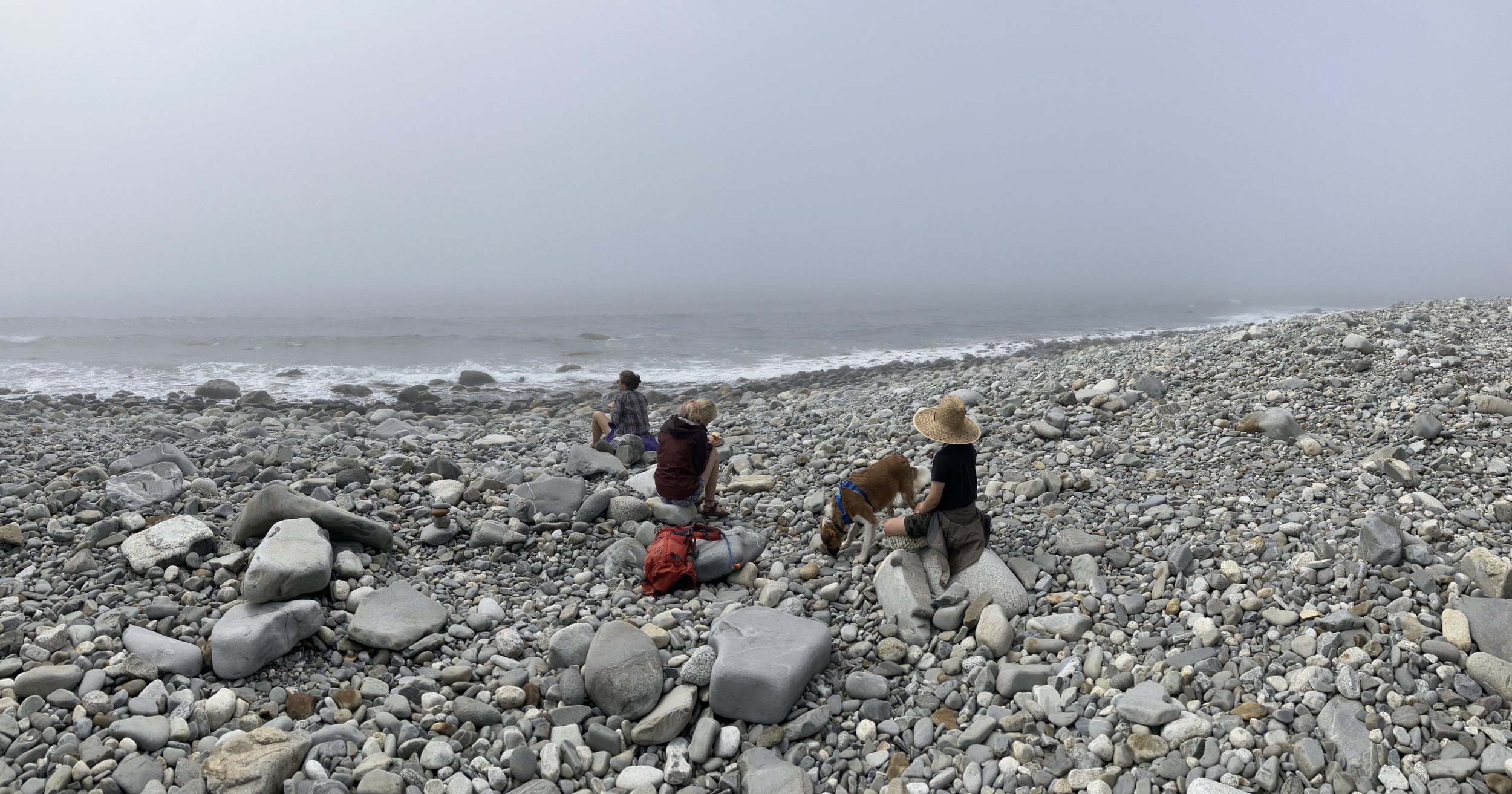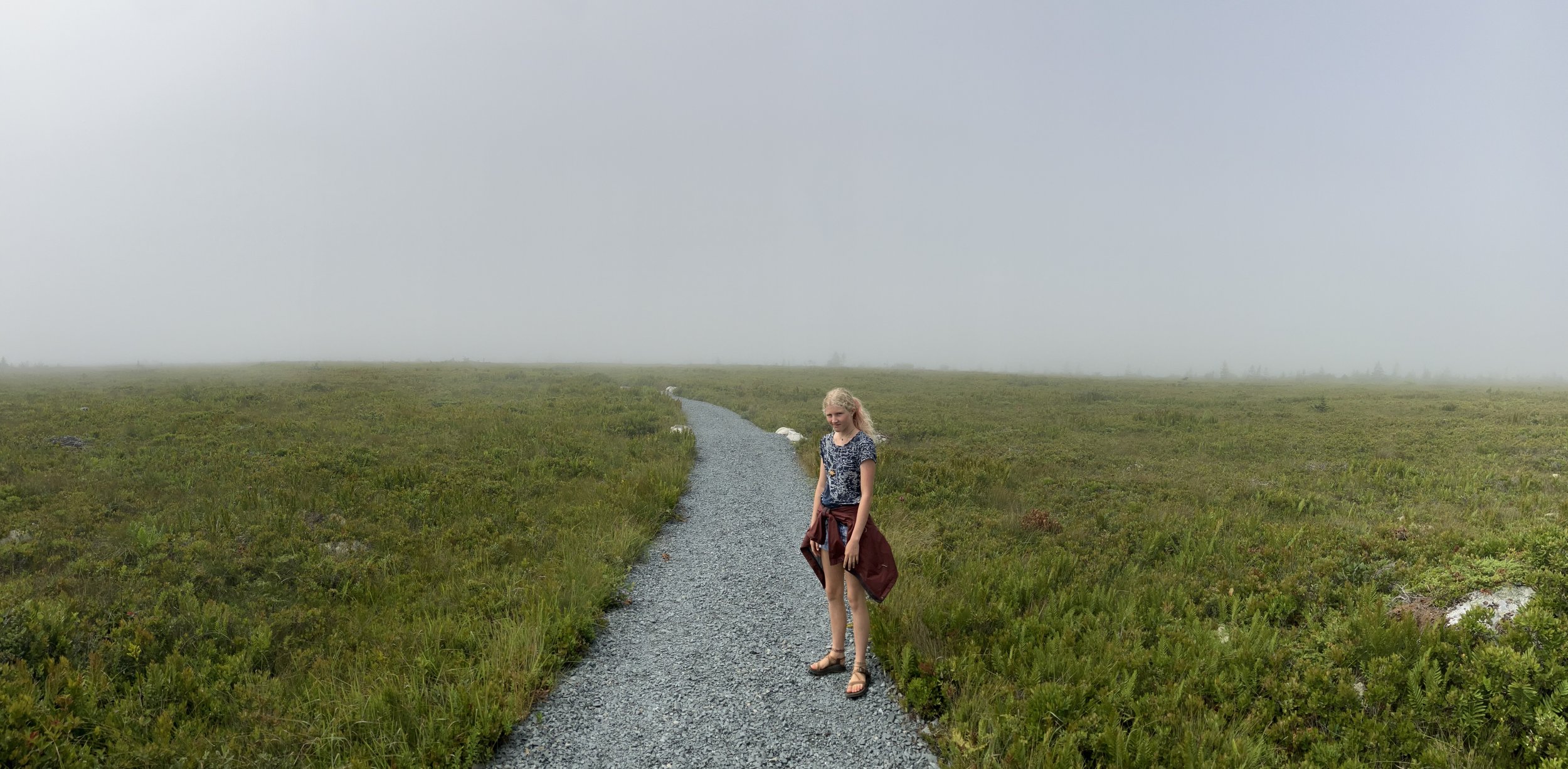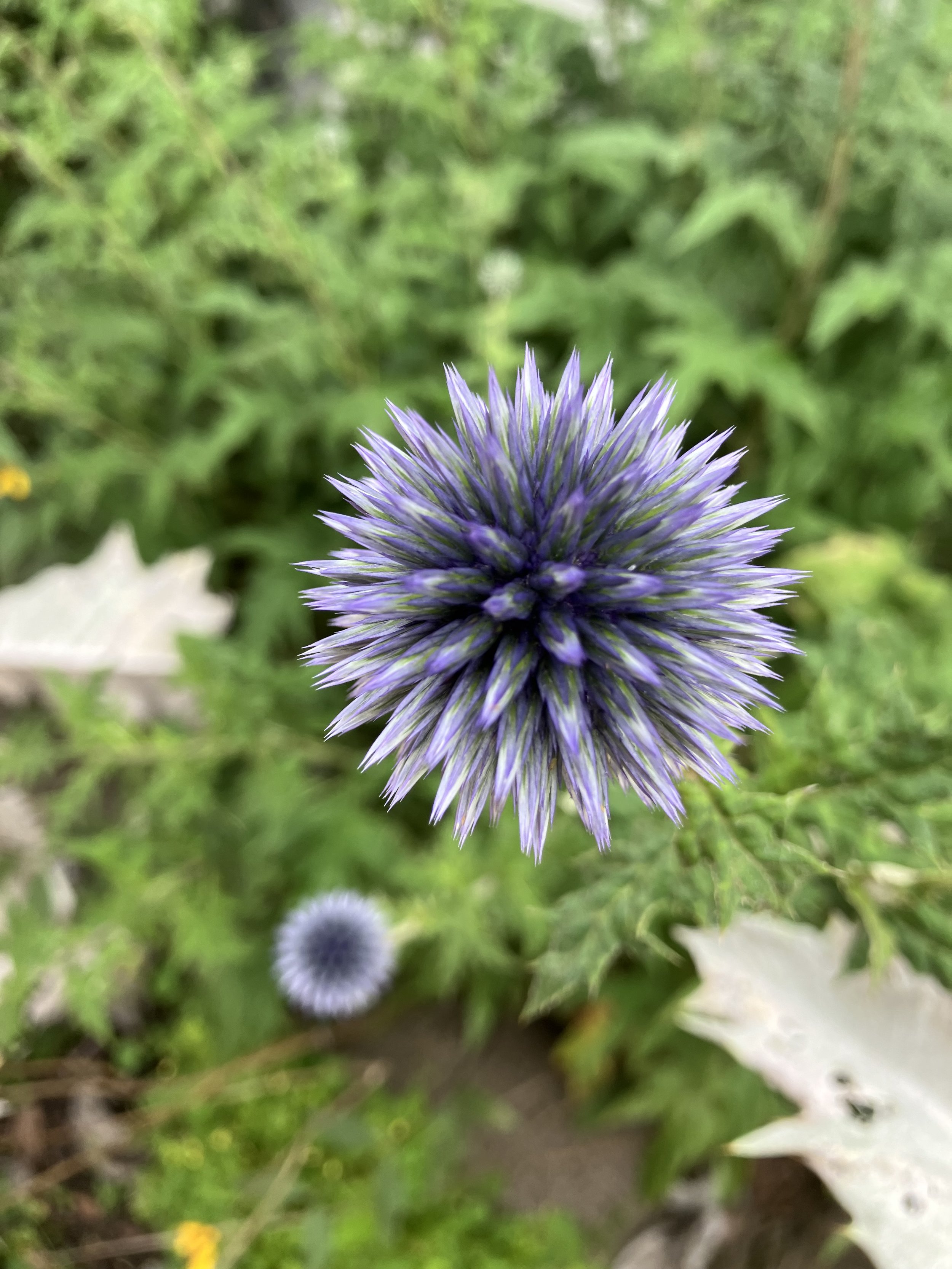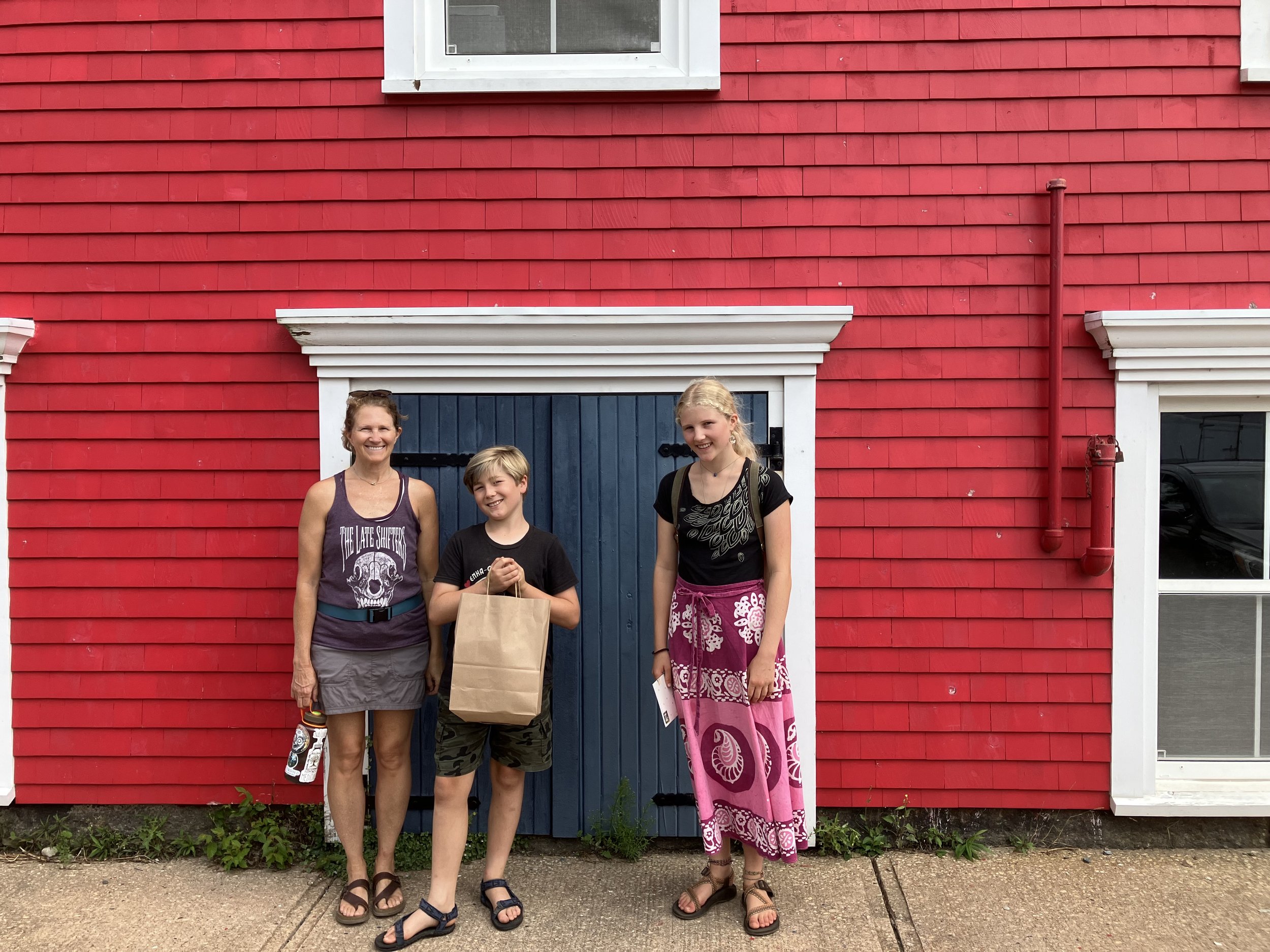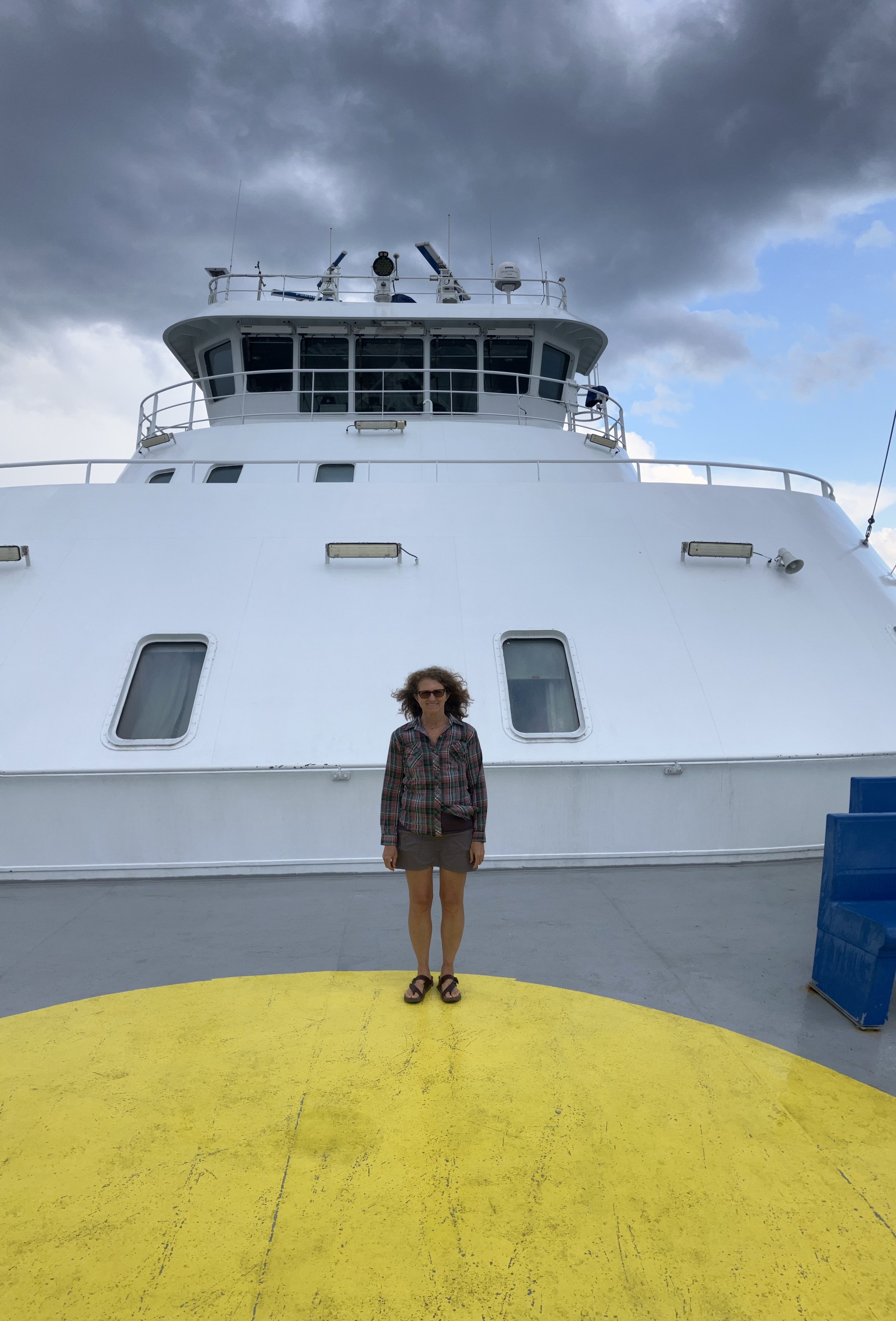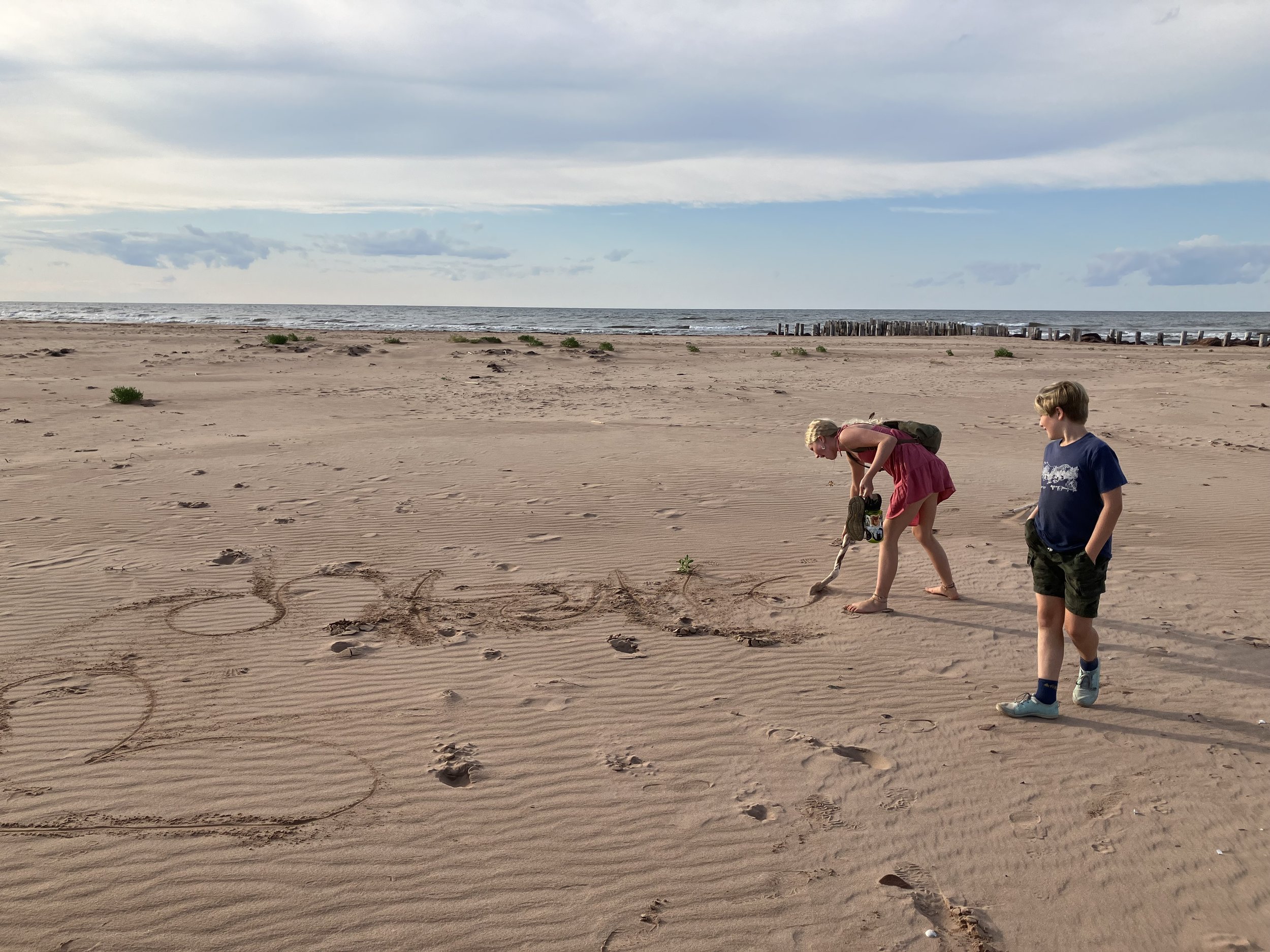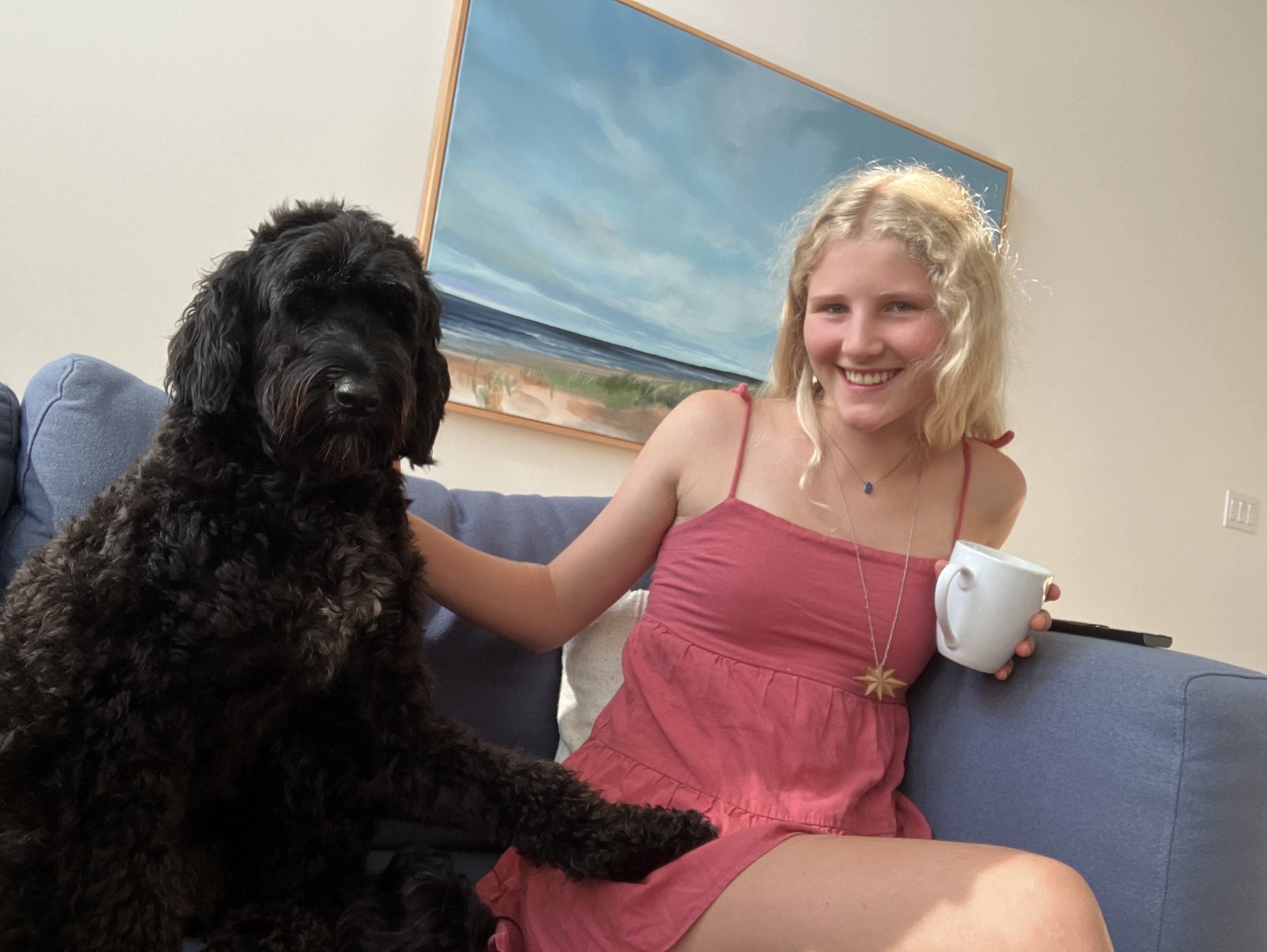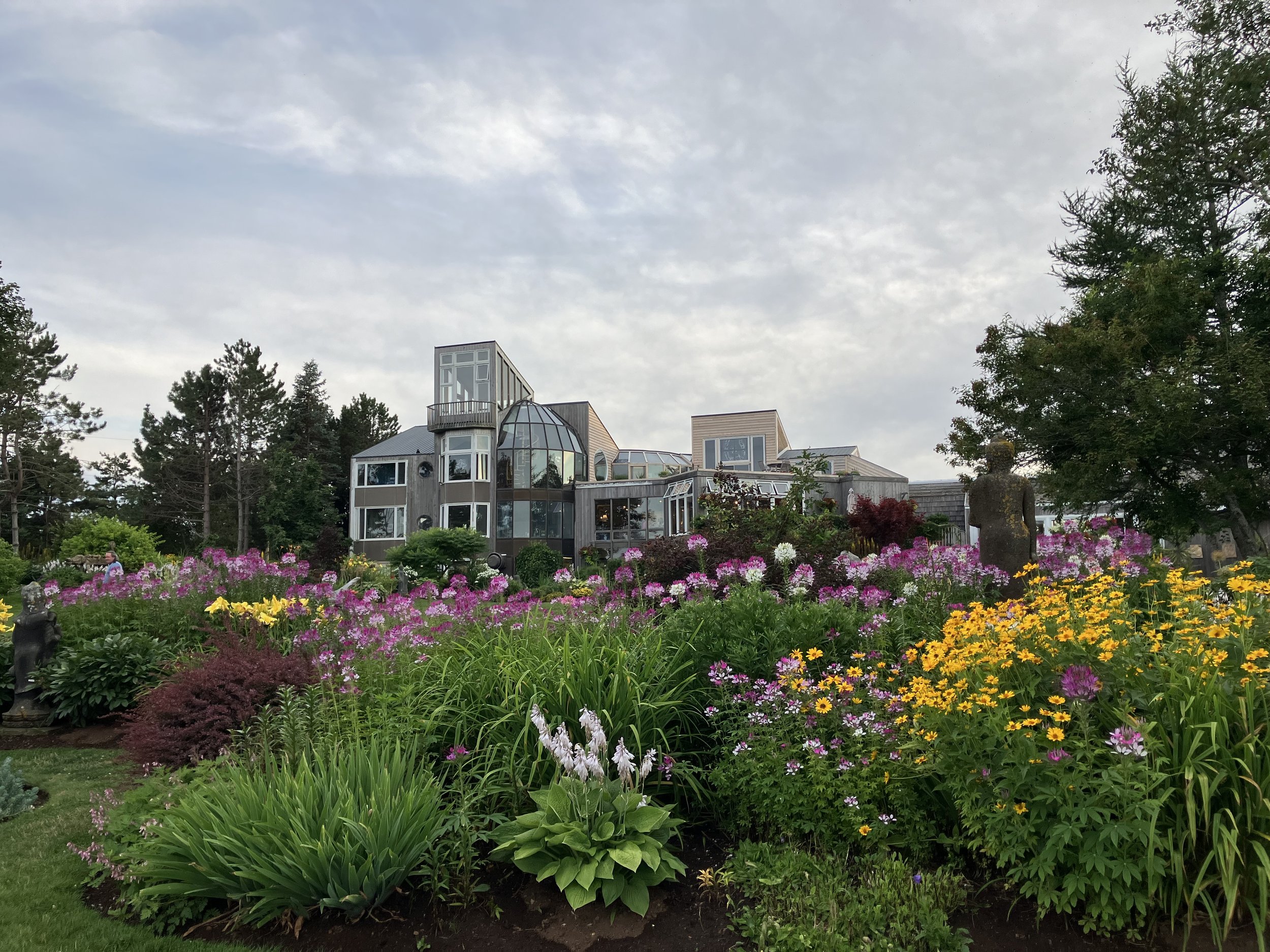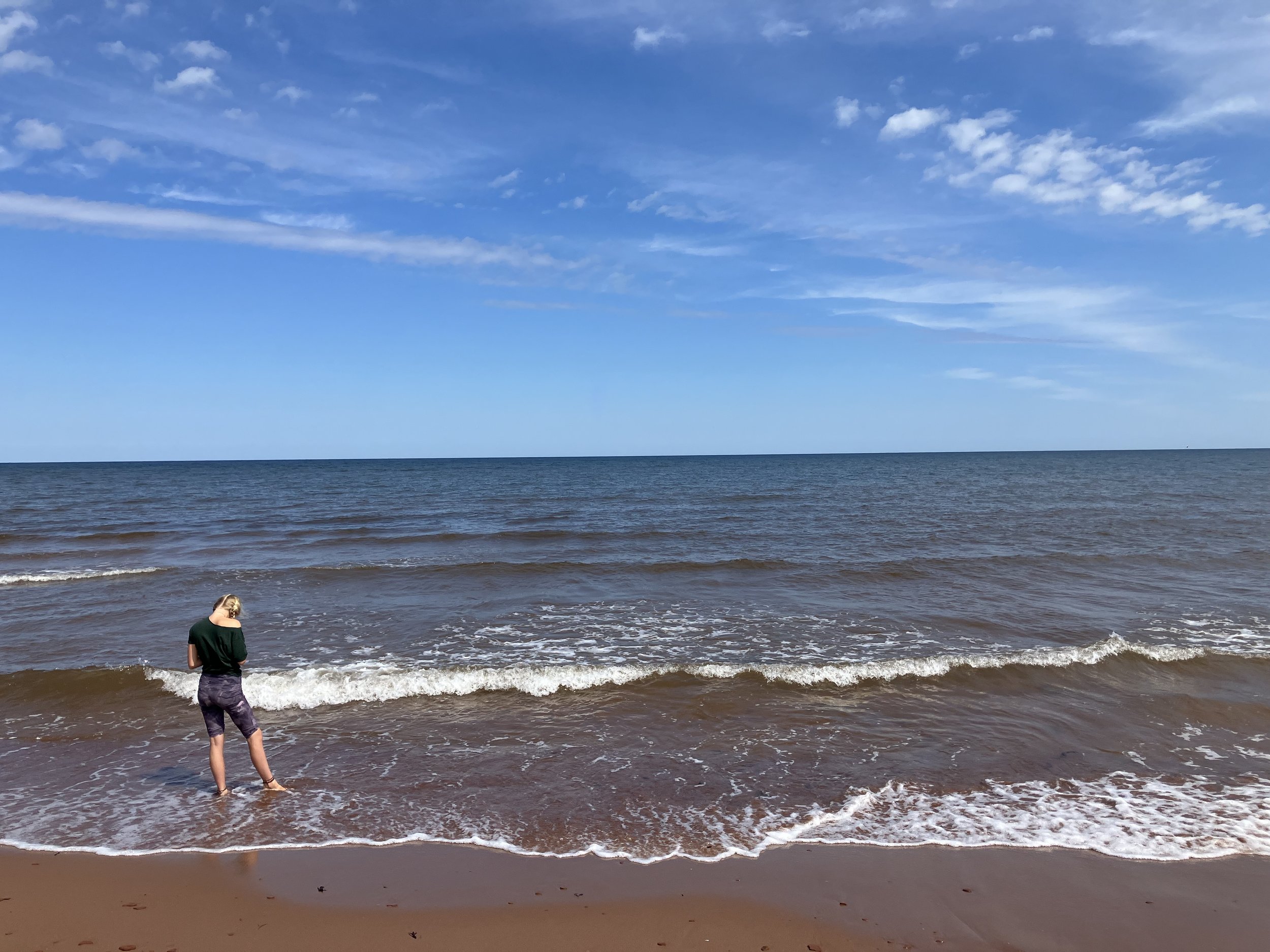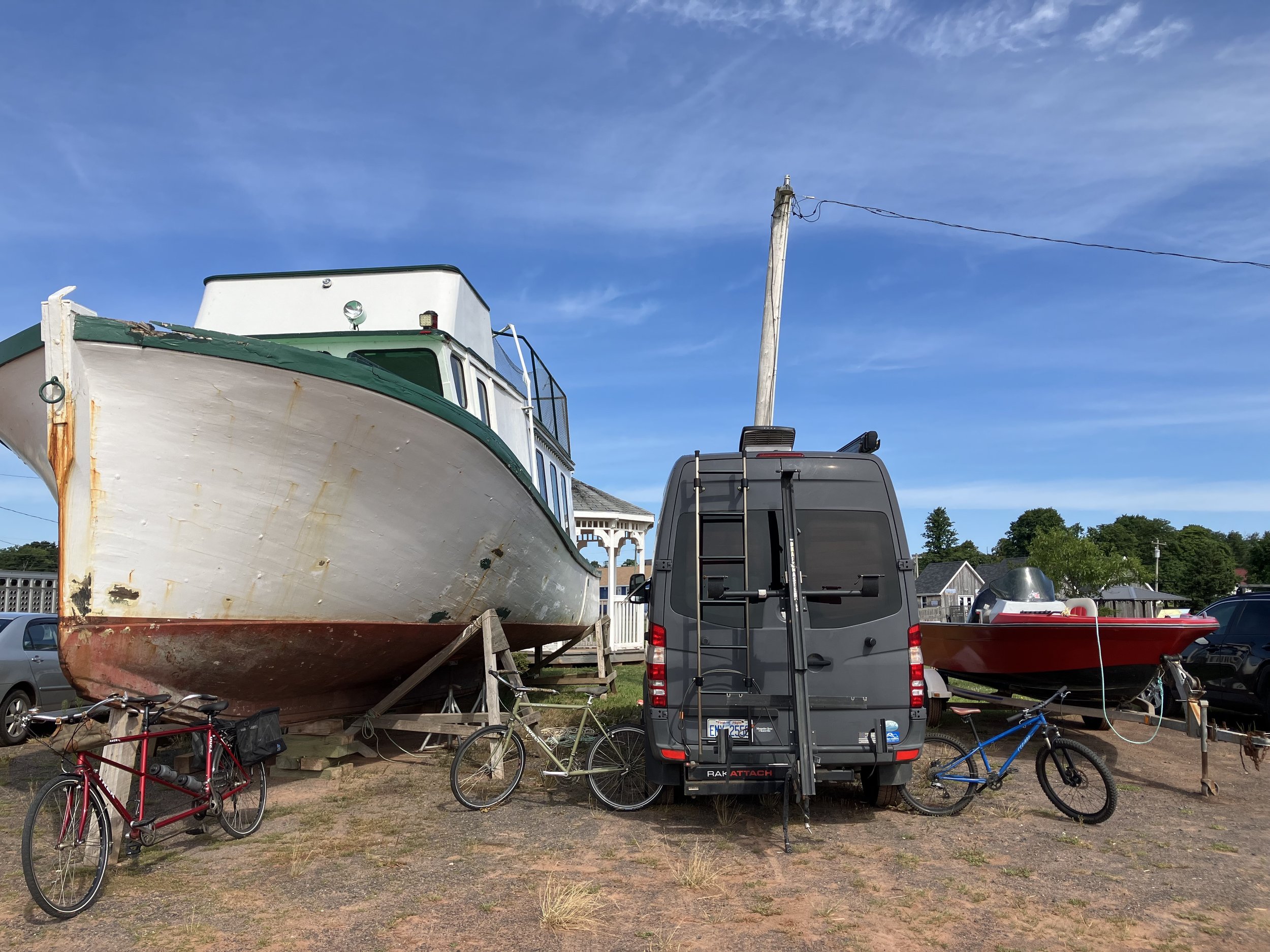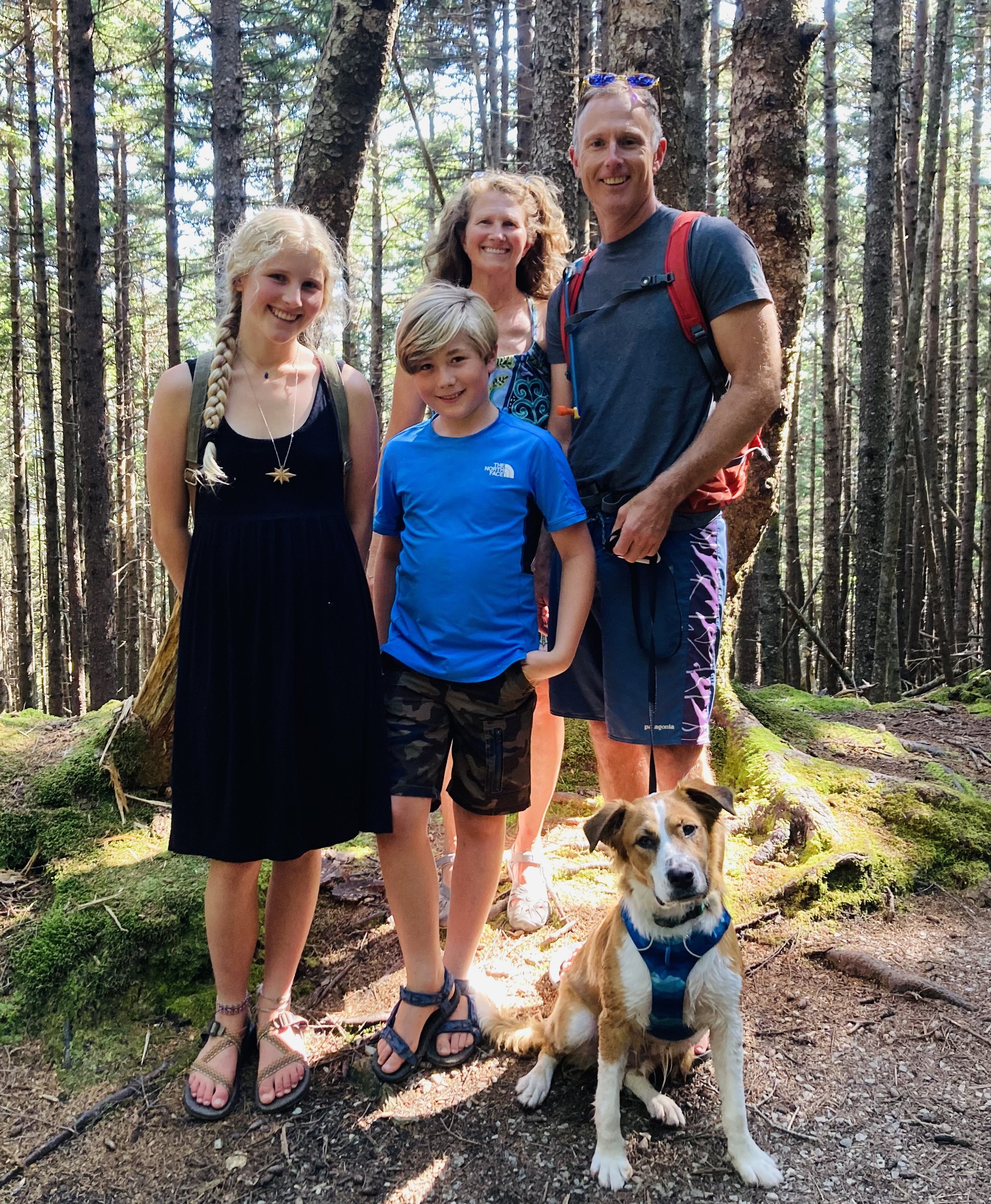Lobsters and Pop Tarts
When I was 18 and working as a river guide in West Virginia, I lived in the back of a pickup truck with a topper on it. I had an old, ratcheting beach chair, a bean bag, and a boom box that I plugged into the cigarette lighter. I had lined the bed of the truck with red shag carpet and put cow-print curtains over the windows. By living in the parking lot of the rafting company, I picked up a lot of last minute trips and much needed income. I was a competent raft guide but I do have to wonder about the first impressions of patrons when, after signing up for a trip, the guy behind the counter walked out to the parking lot and banged on the back of a truck topper until a hairy Kentuckian emerged to the sounds of “Disco Favorites”, the one CD I owned that never skipped.
That truck got me all over the country and kept me from ever having to drive home intoxicated. There were a few nights that I still used the seatbelt even if the truck was parked, though. Partying with raft guides and vacationing tourists can test a person.
Once on a long backpacking trip with a friend, where we were learning the true mystical insights that only marijuana can provide, I realized aloud that, “The ultimate backpack would carry me!” It is hard to describe the depth and profundity of this realization because there really isn’t any. But sometimes marijuana makes you realize that silly ideas can be just as useful as other ideas, and this enlightenment got me to thinking about exactly what I wanted out of a vehicle once my truck decided that it was done with its third transmission.
It wasn’t until after medical school that I was able to get the van I’d been imagining. After some gifts for the folks that had supported me through school, it was the first thing I bought, and I have racked up about a half million miles of travel in a mobile living room since. I’ve genuinely lost track of how many times I’ve driven across the country. I know I’ve been across the north, the middle, and the south and made a few detours to some of the states that I’d missed on previous outings. As a family, we’ve been all up and down the west coast and generally wandered around everywhere west of the Mississippi. We’ve explored as much of the east coast and Florida as we’ve cared to. Nobody in our tribe has ever begged to go to Myrtle beach or any of the other places where you spend a lot of money to stare at other people staring at sand.
Now, I do need to acknowledge the trend a few years ago of “van life” and my appreciation for the enthusiasm of its adherents. I worked at a few van life festivals and met a lot of like-minded folks who were newly discovering the joy of having a vehicle that gave you the option to both go somewhere and to stop somewhere, which is certainly an improvement from vehicles that are just focused on the going part. But there was also a weird fascination with taking pictures of people doing yoga in tight shorts on top of vans and trying to show those pictures to strangers online. When I was a kid, exhibitionism was a crime. I guess it’s a competitive sport now? Not that I don’t like a good yogi in tight pants, I just prefer looser attire for driving most days. Certainly van life made a lot of nifty accessories more available, but it also put an end to the day of people assuming that I was plumber. There was a time when unmarked vans were essentially invisible in National Parks as long as you parked in the service vehicle lot.
Over the last 20 years we’ve kept an atlas in both of the vans that we’ve owned where we’ve highlighted the major routes we’ve taken. If you were to turn on the black lights in the van and look at just the highlighted portions, you’d end up with a pretty decent outline of the US minus New England. (Not that we’ve ever engaged in the sort of behavior that would leave you staring at highlighters under blacklight and making profound statements about the nature of reality or anything)
This year, after realizing we were too broke to cross anything else off the list of “potentially new places to loaf around”, we decided to remedy the issue by driving the whole fam damily, dog included, to Nova Scotia so we could see what was going on up there.
The Appalachians are the oldest mountains on earth and at one point they were the highest. Their geologic persistence and the fact that they stuck up above the last couple of rounds of glaciers is why they support the improbable amount of of biodiversity that exists today. If you get off on wildflowers, amphibians, and the full range of squirrel outfits, it’s the place for you. The Appalachians run north from Georgia all the way to the northeastern edge of Nova Scotia. They pick up again on the other side of the Atlantic in Scotland (Olda Scotia?), evidence of the fact that they existed when there was only one continent. The idea of following the Earth’s oldest mountain range all the way to the ocean seemed like a reasonable impetus for a journey, and the promise of regularly eating oysters everywhere north of Maine was an added bonus.
actual van life; lots of stepping over things to get jackets
We have figured out over the last couple of decades that we shouldn’t plan more than half of a trip. If there’s specific things that we are really excited to see, it makes sense to plan some lodgings nearby so we don’t end up playing the late night “where can we hide a van” game, which, honestly, we are pretty good at. But peeing legally and peeing illegally are different experiences and sometimes it’s nice to know you’re not gonna have to pinch things off for a security guard.
fist signs of Maine
Our plan was to haul ass for Maine, having already seen plenty of Virginia and Pennsylvania, and generally looking down on places like Connecticut just for their wanton abuse of consonants. We did our best to avoid Philadelphia and New York City because we have found that the more humans there are per square foot, the less we want anything to do with a place. I mean, big groups of human in cities end up making all kinds of fascinating stuff, but you still have to elbow your way through a labyrinth of hairless monkeys to see any of it. And, really, I have yet to see a museum or performance that can hold a candle to the sun rising over foggy mountains or a thunderstorm on the ocean. But we did see the big city skylines and we did end up at a random hipcamp site that was a former airport and offered abandoned planes as lodging.
Not as cute as suggested online, but no hassle from the TSA either
Ogunquit, our first stop in Maine
Asheville is increasingly a tourist town and I have seen how that can affect the culture and the enjoyment of living in a place. Any place that is fortunate enough to be attractive to vacationers has to find strategies to deal with ill-behaved hordes. In Asheville we have learned to advertise for our craft beer scene so that we can get tourists drunk enough to buy $30 appetizers so small that the menu frequently contains more adjectives than the dish contains calories. Then we let them sober up and walk around Biltmore, which does a nice job of getting them out of sight since no one that lives here can afford to go there. If that doesn’t empty their pockets enough that they have to go home, then we send them up and down the Blue Ridge Parkway where they can add natural selection to the road cyclist's training regimens. We only want the fastest bikers around here, and out-sourcing the herd thinning to Ohioans and Floridiots makes the process a little easier on the conscience.
In the summer, coastal Maine clearly has a tourist problem as well, and they have taken a slightly different approach which can be bet summed up as, “If you’re done with your meal, please fuck off.” It seemed that there were two versions of Maine, really. There was the cute-town-on-the-coast touristy circuit but there were also plenty of out of the way places where restaurant seats didn’t have taxi-meters.
Ogunquit was our introduction to touristy Maine coastal towns. Beautiful and culturally distinct, but so laden with rules, regulations, and odd cultural norms as to be fairly off-putting. It was clear that puritan values have not died as quickly as their puritan fashion. After being chastised for walking a dog in the wrong place, lingering too long at a dinner table, and just for generally having an unappealing accent, I reached out to a friend who grew up in New England and told her about having just discovered how uncouth my entire family was. She related a common saying about New Englanders. They will always stop and help you change a flat tire but also lecture about the lack of sense that led to you being in such a ridiculous situation. Regardless, it was clear that having an Appalachian accent was basically an invitation for moral scrutiny. Also, in the touristy version of Maine, it is truly impossible to walk half a block without someone trying to get you do something weird with a lobster. I have little doubt that if we had continued to play cards at the dinner table they would have drug us out behind the dumpster and beaten us silly with stale crustaceans.
Pinto lobster
Once we realized that tourist Maine could be circumvented with a bit of extra driving and generally avoiding towns altogether, we made our way out to Freeport and Wolf’s Neck where we found a campground that doubles as an agricultural education center and sells its own produce in a cute store at the camping check-in. We were able to ride the tandem around to a nearby nature preserve where my assumption that bicycles could enter without paying for parking was challenged by an amusingly polite note from the ranger left in my helmet while we were hiking. We put the family paddle board in the ocean and paddled up a tidal estuary where we could jump off of a bridge and watch hermit crabs in the tidal mud do whatever exactly it was that they were doing. Maybe looking for loose change; it was hard to tell.
teen fashion remains elusive to me
sea grass at incoming tide
Stella, getting in touch with her inner hermit crab
From Freeport, we headed around the peninsula to Brunswick where we had chartered an afternoon on the “Blackbird”, a 41 foot schooner built in 1938 and lovingly restored by it’s current owners, Sandy and Peter, a charming couple with strong opinions about wooden sailboats, automotive bushings, and lobster rolls. I was previously unfamiliar with lobster rolls. They are basically a maritime hot dog, with ground up lobster innards instead of the standard amalgam of pork and mystery bits. But local establishments take great pride in their individual approach to fitting crustaceans into hot dog buns and it’s not terribly difficult to eat one or two of them.
headed for the water taxi out to Blackbird with our Lobster rolls
Blackbird
Being on the Blackbird was a true highlight of the trip. Sailing this lovingly restored wooden boat around the dramatic rocky coast and islands of Maine gave us a feel of the preindustrial history of the area as long as we ignored the occasional jet ski. I keep hoping that orcas will learn that these things make easier snacks than seals someday. Fanny and I have been taking some sailing classes lately and it was exciting to steer such a large boat in such new and engaging scenery. Avoiding the ubiquitous lobster trap buoys was the main task with an occasional tack to stay on course around some islands. The kids enjoyed lying about in the sun and exploring the cozy wooden cabins below decks.
Find the Stella
below decks
For a big road trip, we like to plan about half of our lodgings so that we can leave space for serendipity and spontaneity. It’s not really exploring if you always know where you are going. Most of the time this seems to work in our favor and, often, some of our best memories from a trip are the ones that were unplanned or unexpected. Sometimes, though, we just end up stuck somewhere weird in a van, trying to pretend away the misery with pop tarts or tequila, depending on age. Surviving 3 or 4 weeks in a van with two kids and a dog requires flexibility, patience, and an occasional disregard for nutritional guidelines.
This is what being trapped in a van can feel like sometimes
After spending an amazing day sailing along the coast, we struggled to find any place at all to camp that night. Finally, online, we found a tent site at some strange run down amusement park styled RV park. It was an explicable mix of children’s rides, BBQ kiosks, swimming pools and thousands of vacationers in large RVs and trailers, “camping” right next to each other. In the dark, it was a sinister and mysterious labyrinth, and having arrived late, the security guard who opened the gates for us had no advice on how to find our site. We drove the tight curving rutted gravel roads through what seemed to be an upscale refugee encampment and eventually gave up on finding site 326 in favor of just parking in a flat spot between some trees and hoping for the best.
Something about this amused the kids; and it did remind me that there is a unique joy in breaking rules together as a family. It’s just a good reminder of who’s opinion you actually care about. We have found that, if you arrive late and leave early, there are quite a few places that you can park a van at night without really paying attention to reservations or sometimes even payment. Ever since camp sites became something you could reserve online, there are almost always empty, but paid for, sites at campgrounds and we use them as our backup plan when all else fails.
Canasta times
Reading back through my journal, I find an entry the next day for cooking salmon and Brussels sprouts and enjoying them with a local blueberry wine at a “lovely campsite on the bay overlooking some islands”. I have no actual memory of this, but according to my journal this is also the day that I found out that marijuana was legal in Maine and stopped by a dispensary to see what that scene was like. Reportedly, we also wandered the town of Rockland in the rain and purchased a lobster shaped chew toy for Pinto. Regardless of my past self’s capacity for responsible decision making, he is at least a fairly thorough journal keeper.
chained to a onewheel, eating a fake lobster. poor thing
The next day ended up significantly more adventurous than we had expected. We had booked a ride on a passenger ferry to Monkegan island, an inhabited but isolated island 10 miles off shore. Popular as a writer’s and painter’s retreat, it also advertised some remote and rugged hiking that appealed to us. As we got in line to board the ferry, we followed the crowd down the ladder to bottom of the boat to find it completely full. But, then everyone behind us immediately found space on the top, leaving us nowhere to sit at all, We ended up standing in the open front of the boat, shoulder to shoulder with our rain coats on as occasional waves splashed over the bow, drenching us. Tiff managed to squeeze into a spot indoors where a couple of passengers also took pity on Pinto and let him lay down under their bench. The kids and I finally gave into the adventure of the experience, thanks in large part to a single middle aged woman in a track suit who growled vigorously every time she was overtaken by a wave and inspired me to greater courage than I would have had without her.
scenic sea trash
Monkegan snacktime
Europe in the distance. Gotta squint.
Monkegan was worth the drenching to get there, however. After walking out of the quaint small town near the harbor, we made our way to the eastern side of the island and hiked a relatively strenuous trail along the rocky coast. The weather shifted frequently between cool wet winds and hot still sunny patches within the trees, necessitating an almost constantly shifting wardrobe. We saw seals lounging and swimming on rocky outcroppings off shore with only ocean between them and Europe. We made our way from the trail to a lighthouse atop the highest point on the island where about 10 artists had set up easels and were painting various perspectives of the surrounding scenery while keeping up a lively banter about color and light. We eventually wound our way back to town where we able to locate beer and ice cream to fortify ourselves for the return trip which turned out to be calm and uncrowded.
shipwreck
someone's parking place, apparently
Monkegan
We made our way back though Rockville where their inevitable lobster festival was in full swing and restocked some camp stove fuel and replaced a leaky camp mattress. We made it quickly out of town before succumbing to lobster pancakes or lobster beer or whatever other deranged use of sea crickets they had come up with.
campsite times
Our next destination was Acadia National Park which I have always been curious about. It has the highest mountains on the Atlantic coast with exposed granite domes and broad valleys with scenic lakes. I also have come to have mixed feeling about national parks and their increasing popularity over the last 20 years. Scheduling entry times and purchasing tickets to be allowed to drive somewhere in a line of tourists can make it hard to sink into the nature that I am there to experience, and I had read that Acadia was becoming one of the most visited parks in America. Based on these concerns we entered the park and immediately headed away from the well known scenic drives and overlooks and made our way out to the Schoodic peninsula. There, we were able to do a scenic bike ride along the coast, stopping frequently to do short hikes out to the rocky shore with its myriad tidal inlets. As a family, we easily became enthralled by watching the incoming waves transform into brief turbulent rivers between the narrow channels of broken rock. The mesmerizing regularity of the water rushing in and out of the rocky crevices made us wish we had planned more time in this part of the park. We had been unable to finding camping within the park boundaries of the park because we rarely plan things 2 years in advance, but we ended up at a lovely private campground just north of Bar Harbor, the Gatlinburg of Maine. Our site was set atop a high broad meadow looking out over the mountainous shoreline.
hiking in Acadia
Schoodic peninsula
Me attempting to mimic the Insta-posing of some nearby youngsters. It looked better on them.
For our next full day in Acadia, we had purchased timed passes to drive to Cadillac mountain, which seems to be the primary activity for most visitors. When we approached the entry gate for the scenic drive, we were told that our vehicle was too long and that we would have to remove the bikes and store them inside the van while on the drive. We pulled over to consider this and decided to just head somewhere else in the park. We drove around and found a place to park that gave us access to the trails leading to Mt Penobscot and enjoyed the rocky scrambling to the exposed granite summit. From there, we could see the summit of Cadillac Mountain, which being slightly higher, was completely covered in clouds. This proved that our impulse to go which ever way the crowds weren’t was a good one. The descent from Mt Penobscot required hoisting Pinto down some boulders like a fire bucket brigade and we confirmed that he is indeed a pathologically calm animal. I have seen few dogs who were so comfortable being treated like a suitcase.
Mt Penobscot
After the hike we took a long drive around some of the remote areas of the park and found a public put-in for Long Lake. We inflated the jumbo SUP and paddled out to an amazing view of the Bubble Mountains where we were visited by a family of ducks who seemed charmingly curious about what we were up to.
Bubble Mountains from Long Lake
From there, we wandered to a nearby town with a Coast Guard station where a young enlistee offered to show us some of their boats which were clearly designed for more tumultuous waters than I ever hope to see. Van trips are relatively inexpensive for the amount of places we can go, so we tend to splurge on occasional fancy meals. If you are ever in Southwest Harbor, Cafe II is an amazing place to get seafood and wonder about the locals portrayed in the elaborate murals surrounding the inside of the restaurant.
campground times
After another night camping near Bar Harbor, the kids wanted to hang around camp and do some nothing so Fanny and I decided to get the tandem out on the gravel carriage roads that are laced through the southern end of Acadia. The kids agreed to do laundry if we didn’t make them join us so we left them with some quarters, the dog, and some pop tarts.
Unfortunately, Fanny had spent enough time with the map to discover one of her infamous “shortcuts” into the park which took us along a rocky meandering path designed for vehicles significantly more robust than a 40 year old tandem bicycle. Compared to many of her shortcuts, this one only cost us about an hour which was nice. The carriage roads in Acadia were laid out by Rockefeller and other plutocrats in the 20s and have been well maintained and improved since. It was an amazing way to see a lot of the park without the distractions of traffic and crowds. Returning to the campground, we explored another “shortcut” that took us across a closed bridge and we ended up getting stopped by some private property owners who were not even slightly interested in letting us go through their back yard. Ah, the joys of an adventurous spouse!
Fanny "Shortcut" Sauls
This ended the American portion of our exploration and we were very excited to board the vehicle ferry to Nova Scotia. We arrived early because we had had to purchase both a “tall vehicle” and an “oversize vehicle” ticket and were told that we would need some extra time. At the entry booth they gave us a list of customs regulations that stipulated that most all of the groceries we had just purchased and packed into the van were illegal to bring into Canada. Reluctant to throw away a bunch of expensive fresh food we hid the cooler under a bunch of outdoor gear and packed all the fruit and dry goods into the bottom of a sleeping bag tucked deep into van storage. We kept a few bananas and oranges visible as a sacrifice hoping to ward off further inquiry.
The ferry was scenic for the first few minutes until we were enveloped in a thick impenetrable fog for the duration of the 3.5 hour trip giving us time to catch up on some card games and snacks. Unexpectedly enthralling was when the harbor pilot descended a swinging ladder to an accompanying boat to the applause of onlookers.
Upon arrival in Canada, we were fortunate that the customs agent barely looked up from his list of standard questions, readily accepting my standard lies in return. Maybe banana smuggling is not as high on the list of Canadian priorities as we had been led to believe.
We had timed this portion of our trip fairly poorly and had little time before dark to drive. It had begun to rain heavily with continued fog, making driving strenuous. We were able to find an opening online at a run down campground in the middle of nowhere, but pulled into find our site occupied by an exuberantly rowdy group of Indian tourists who had constructed a bonfire of truly impressive proportions and were blasting some lively Bhangra tunes. We parked in a flat spot nearby, certain that it was too late and rainy for anyone to care. It was hard to enjoy our neighbor’s festive groove initially, but after busting out some blinky lights that I had squirreled away, and dipping into our stash of smuggled booze, we managed to adapt to the involuntary festivities. Around 2 am they upped the volume and I had to roll out of the hammock and ask for a bit of quiet. Lucky for us, they were at the slow and amiable portion of a long nights drinking and very kind about wrapping things up for the evening. We awoke to the site that was technically ours and found it devastated with beer cans and potato chip bags but fortunately the campground host believed our story about the exuberant partiers.
Kelimkujic Seaside National Park
By light of day, with the rain having let up, we drove on to Kelimkujic Seaside National park, an out-of-the-way oasis of coastal beauty. Long winding trails though low shrubbery to rocky beaches with unusual patches of light blue carribean-looking water and strangely fluctuant weather. Cold fog alternated with hot sun which immediately created thick humid air only to be blown away by cool fog again.
We continued along the southwestern edge of Nova Scotia, in and out of various peninsulas and estuaries with quaint towns full of brightly colored boxy buildings, all with steeply pitched rooves. Many of the old churches have been well-maintained with elaborately embellished wooden steeples. We spent some time at an odd sprawling sculpture garden in Cosby and drove on a beach near Crescent Beach where Stella and Jude braved the frigid waters while Fanny and I watched and snacked.
Crosby sculpture garden
Fanny and I took the rest of the day to have a prolonged intermittent argument about directions and each others driving abilities because you can’t go on a road trip without at least one good argument. As usual, there was no clear winner, but as history is written by the victors, I maintain that I am a clearly superior van driver and that my particular charms never grow old.
I do remain very proud of how much time our family can spend together in a small space with a minimum of drama. Family life and vacations can both be very difficult, but we genuinely enjoy one anther 95% of the time. Also, with the kids being a bit older, it’s nice to be forced into being totally ourselves by being trapped together for so long. I can only go so long without profanity and dark humor and it’s nice to know that the kid’s moral compasses are true enough to weather my moral failings. Being a good example isn’t always the same as being a real human.
Crescent Beach
On our last day in Nova Scotia, before taking the ferry to Prince Edward Island (PEI) we spent a morning in the town of Lunenburg. The town is partly known for its three bookstores which serve as social hubs. Each has a sign in its window saying, “One of the best three bookstores in Lunenburg” and we were able to restock on books and graphic novels. Our family can go through some books on a vacation.
bag o' books
Lunenburg
Aboard the vehicle ferry to PEI, we saw sunlight shining through storms on the horizon and pods of dolphins. We later learned from some locals that these large fast ferries are a danger to whales because of their disorienting volume and speed which was saddening to discover. One of the most difficult things about being a tourist is not understanding an environment well enough to know how to treat it kindly. We disembarked in Charlottetown and headed north through the middle of the island toward Rustico, a small town where a friend of Fanny’s had offered to let us stay for a couple of nights. Driving across the middle of PEI somewhat reminded me of southern Indiana with its rolling farmland and tidy Mennonite farms. Although on PEI, tidy farming seems to be a cultural norm rather than a quirky version of fundamentalism.
ferry fairy
I had imagined crashing in Fanny’s friend’s driveway like we often do when we visit friends in the van, but Liz and her daughter, Cameron, ambushed us with a level of hospitality that will be hard to ever repay. We were welcomed to a homemade dinner, our first real beds, and non-coin operated showers in two weeks. On oddity of new England camping we discovered was that every shower required quarters and a some real assessment of our showering priorities depending on how much loose change we could find in the van.
The next morning, we walked to the closest beach and played in the ankle deep mud left by the receding tide as Pinto exhausted himself chasing his new dog-friend, Dottie, in and out of the water. After a day of lounging around the beach we went to dinner with some of Liz’s friends to hear one of their brothers play music at a local restaurant and were later given free ice cream by a third brother who owns a local grocery and art gallery featuring their sister’s art. It was really enjoyable to get to talk to several members of a family with deep roots in the area and to get a better understanding of what life there is like. It seems that summer tourism supports a place where it is very difficult to survive in the winter and that the economics of this dynamic have dramatically affected what historically was a community tied to fishing and farming.
Stella and Dottie
I have no idea what's happening here
PEI botanical garden
The internet is a well know place to purchase things that turn out to be different than advertised. This is true even of sailing expeditions. We had booked an aquaculture and wildlife tour aboard a small sailboat in a nearby town. After a morning exploring the coastline and beaches by bike, we wandered the harbor of North Rustico and laughed at the notion that the single run-down sailboat moored there was the one we would be traveling on. But as it turns out, “The Elusive” was indeed to be our vessel. Ominously, we had played the theme song to “Gilligan’s Island” in the van and the possible foreshadowing was concerning.
The captain looked like she had divorced several pirates for being sissies and her crew was a 16 year old Vietnamese emancipated minor who had decided to remain in Canada after his family returned to Vietnam. We were joined by another family of three who appeared to share our reservations. “There’s supposed to be 8 of you, but 7 is enough for me so let’s get outta here,” said our captain, and away we went.
maybe my favorite parking spot of the whole trip
We sailed up the bay to see the oyster farms which are long rows of cylindrical floats containing baby oysters. These are submerged in the winter to prevent freezing and I was surprised to learn that even with the carbon costs of transporting oysters, they are generally a carbon negative food because of the amount of carbon they sequester in their shells. Conversely, as both pollution and temperatures rise in our oceans, oysters are more likely to contain bacteria and microplastics than they were in the past. I maintain that eating them with a glass of cheap champagne remedies both of these issues, but not everyone agrees.
aboard the "Elusive"
drunken sailors
After touring the oysters we made our way out of the narrow bay into the open ocean and north along the coast. Supposedly, both great white sharks and the Orcas that prey on them are common here, which immediately quelled our interest in swimming. This part of PEI is remote enough that accurate forecasts are not easy to come by and we were met with surprise winds that heeled the boat concerningly to the side amidst some reasonable sized waves. We reefed the mainsail to lessen the impact of the gusts and turned back for the bay. It was genuinely alarming for a bit and despite my natural protective instincts for my children, I was thrilled to see them more excited than frightened. Real adventures can be hard to come by as a family, and they become rare and treasured memories. (Once everyone is warm and dry anyway)
We bought fresh oysters from a family who’s accent was so far removed from our Appalachian drawl that our order involved some pointing. But we also got a quick lesson in oyster shucking and headed back to Liz’s house to test our skills. Fresh oysters are a divisive pleasure but being able to buy them where they were harvested and pry into them ourselves made them a memorable treat.
After a couple of days of impressive hospitality on the part of Liz and Cameron, we reinstalled ourselves in the van and headed northwest across the 8 mile long confederation bridge from PEI to New Brunswick toward the Bay of Fundy, home of the largest tidal variance in the world. The difference between high and low tide in the bay of Fundy is regularly around 30 feet and can be as high as 50 feet, creating intermittent rivers in the surrounding valleys. Tide arrives with a wave in some places that can be surfed inland for hours. We were able to find a campsite in the National Park where we hiked down to the bay at high tide and swam and skipped rocks before turning in for the night. The next morning we saw boats that had been buoyantly moored the night before at the nearby town, now lying on their sides in the mud 20 feet below the dock at low tide. The local fisherfolk live by the tidal schedule as high tide is the only time that boats can leave or return.
From here, we were on an accelerated return trip and drove the entire day back to Portland, Maine for groceries, dinner and a quick trip to a veterinary urgent care for a case of canine conjunctivitis that Pinto had gotten. We had to once again hide our food before customs and this time the border patrol agent wanted to look in the van. I can only say how proud I am of my daughter for catching a bag of oranges that I tossed her, squirreling it away under the seat, and resuming some nonchalant cross-stitching in the brief time that it took the agent to walk around to the bay door to the van.
ugly factory, but this rapid changes direction with the tide.
We have always heard about Portland’s charm but we had very little time and can only attest to the fact that it is possible to get the world’s saltiest tacos there. We made our way to another random rain-soaked campground before another marathon drive to Maryland, once again getting snarled in the web of population density that surrounds New York City. Traffic is so reliably bogged down that there is a booming business in on-ramp snacks and beverages that can be purchased from enterprising city dwellers with coolers and an apparent immunity to carbon monoxide.
We had to drop Fanny in Maryland to finish up her MDMA research project which left the kids and I the choice of driving straight to Asheville and arriving around 2 am or camping another night. We opted for the potato chips and red bull plan and enjoyed an amazing sunset in Shenandoah valley before winding our way back down Sam’s gap and into familiar terrain.
In many ways it felt like a perfect trip. We saw new places, learned so much, and made many new memories together as a family. I have almost wondered if this was the trip where we graduate from van travel into new ways of exploring. 3500 miles and 72 hours of driving later, it would be hard to imagine having a better experience as a family than we did, and I am a big fan of going out on top. If this was the culmination of the lessons that I began in the back of a truck in a West Virginia parking lot, I’d consider it a well designed curriculum that has prepared me for whatever is next in life. My hope is that this trip leads to some changes in the well worn routines we have created in our unexpectedly long tenure in Asheville. At the very least I feel less guilty about my oyster fetish.


